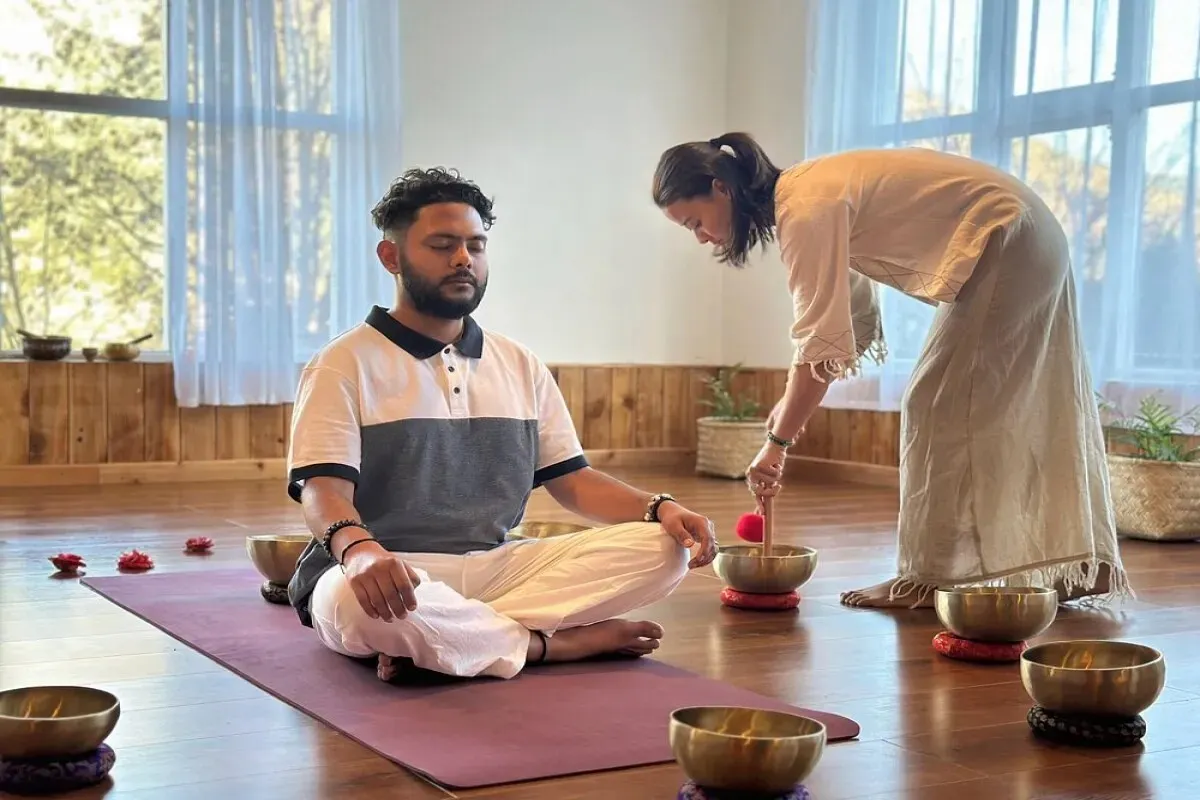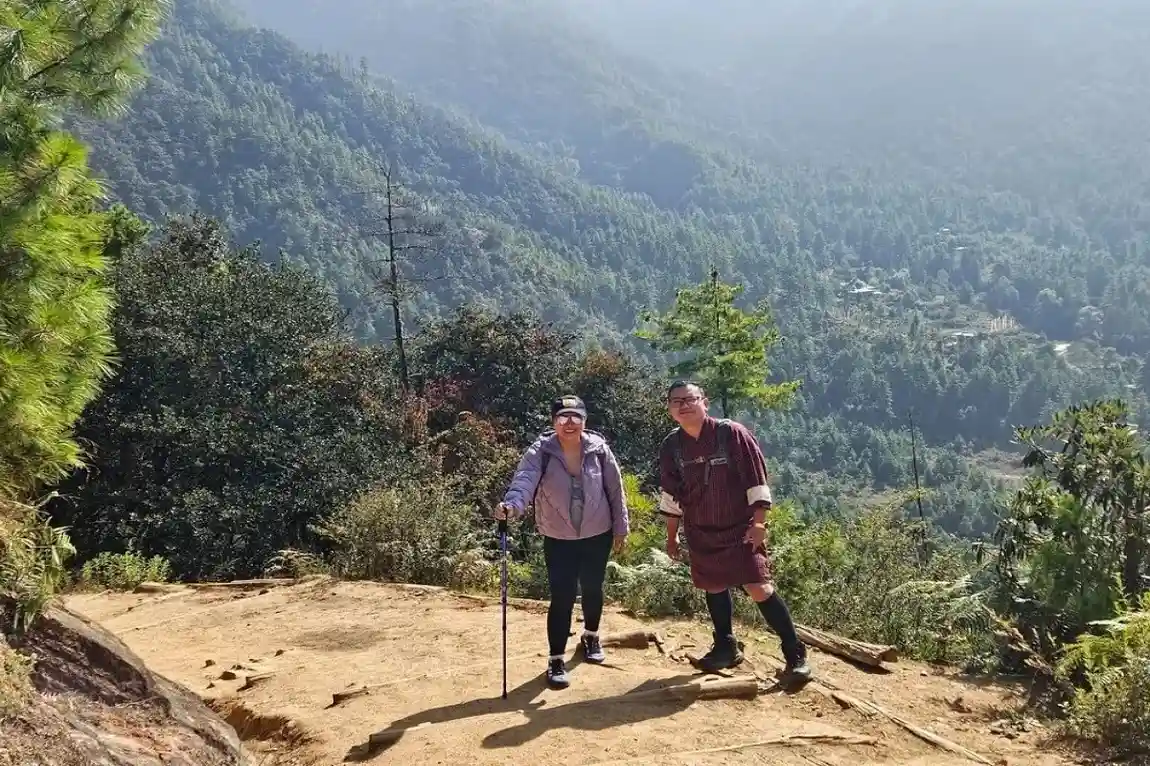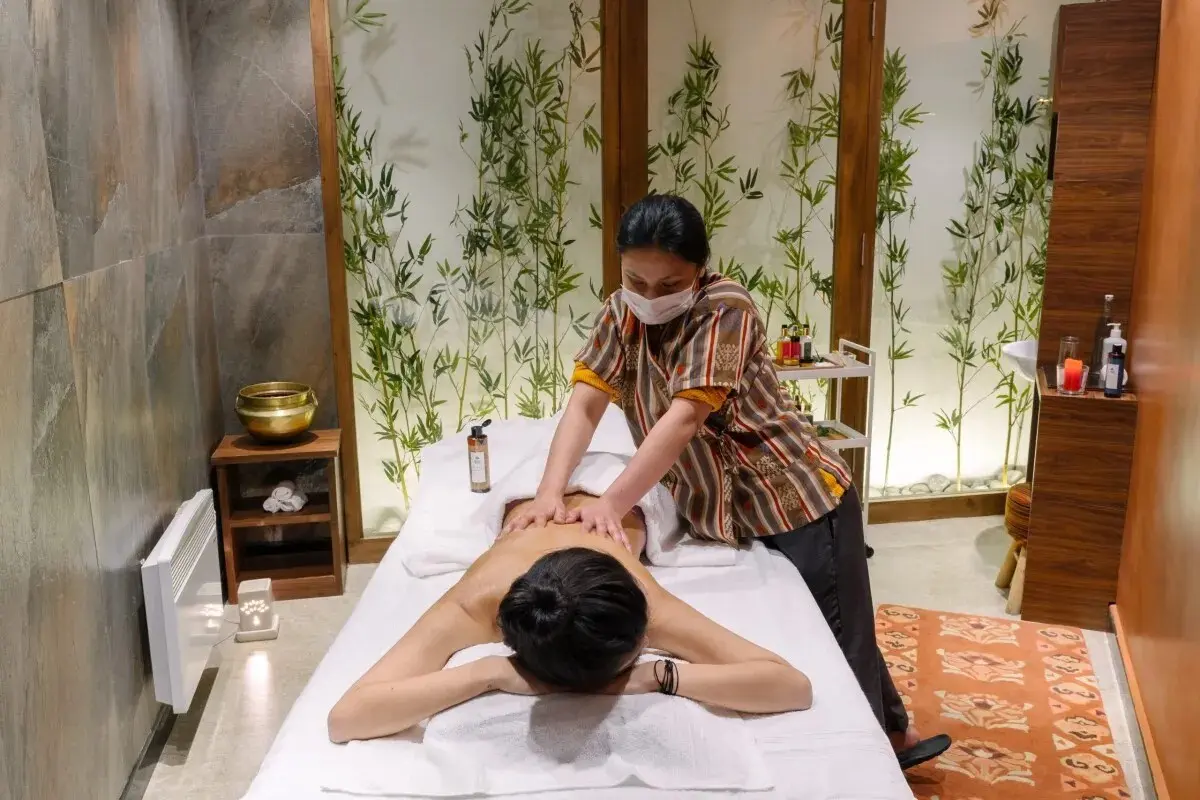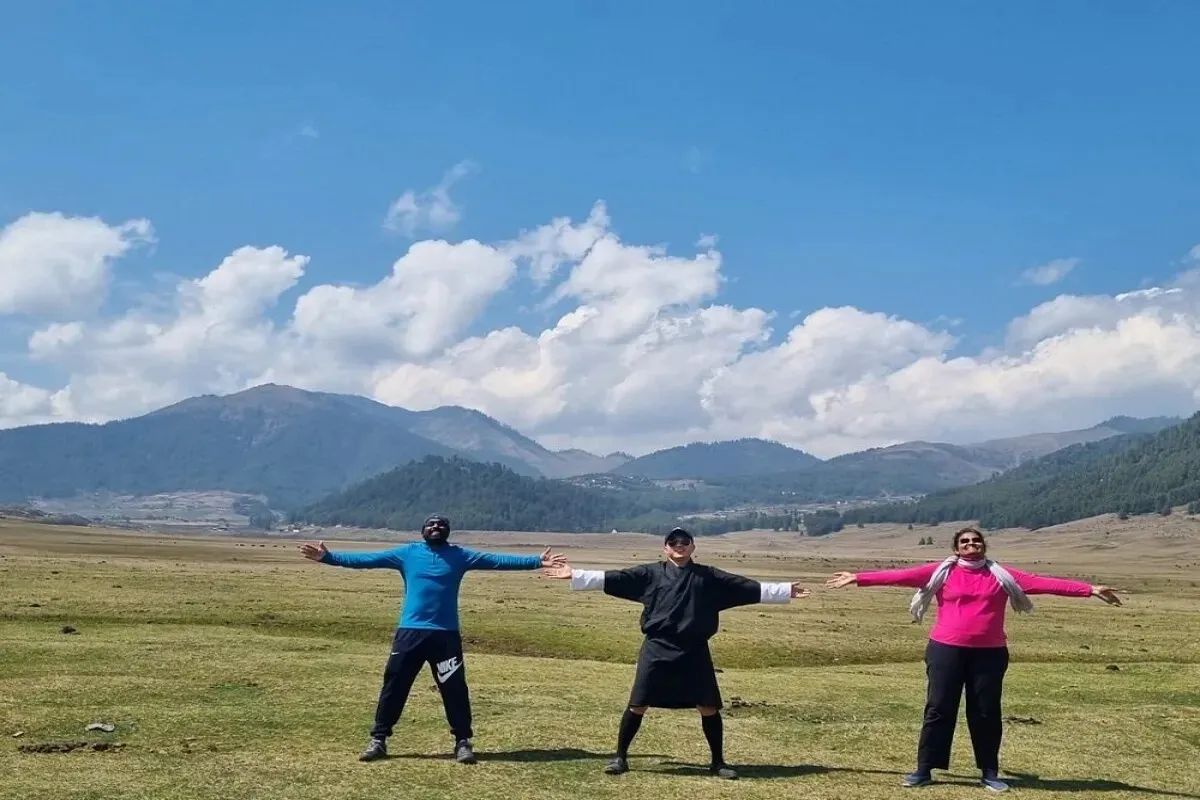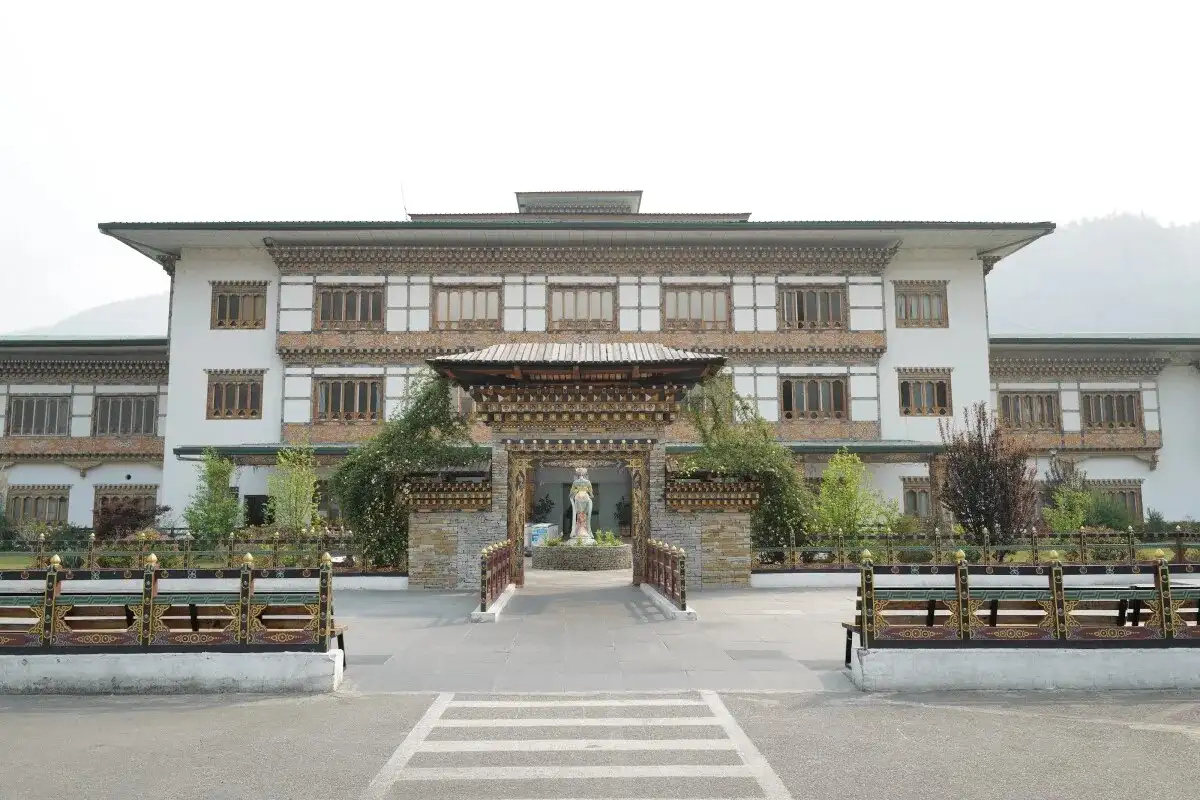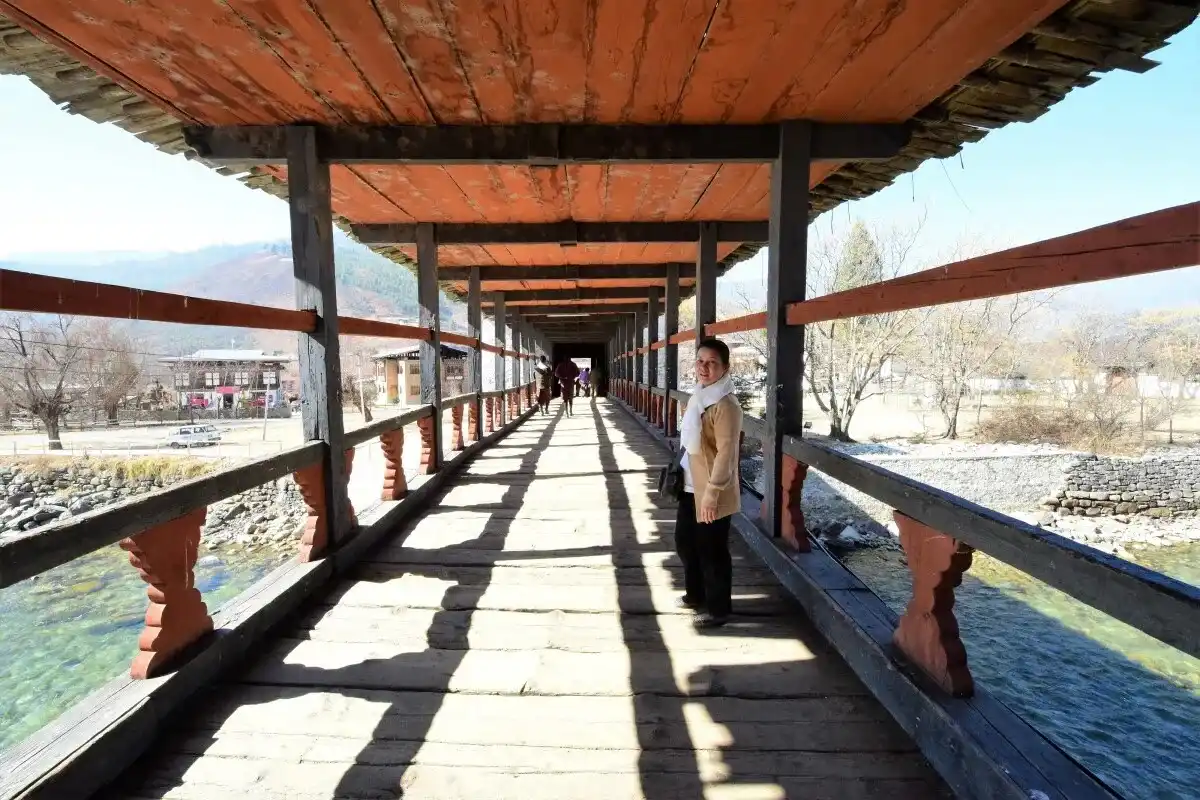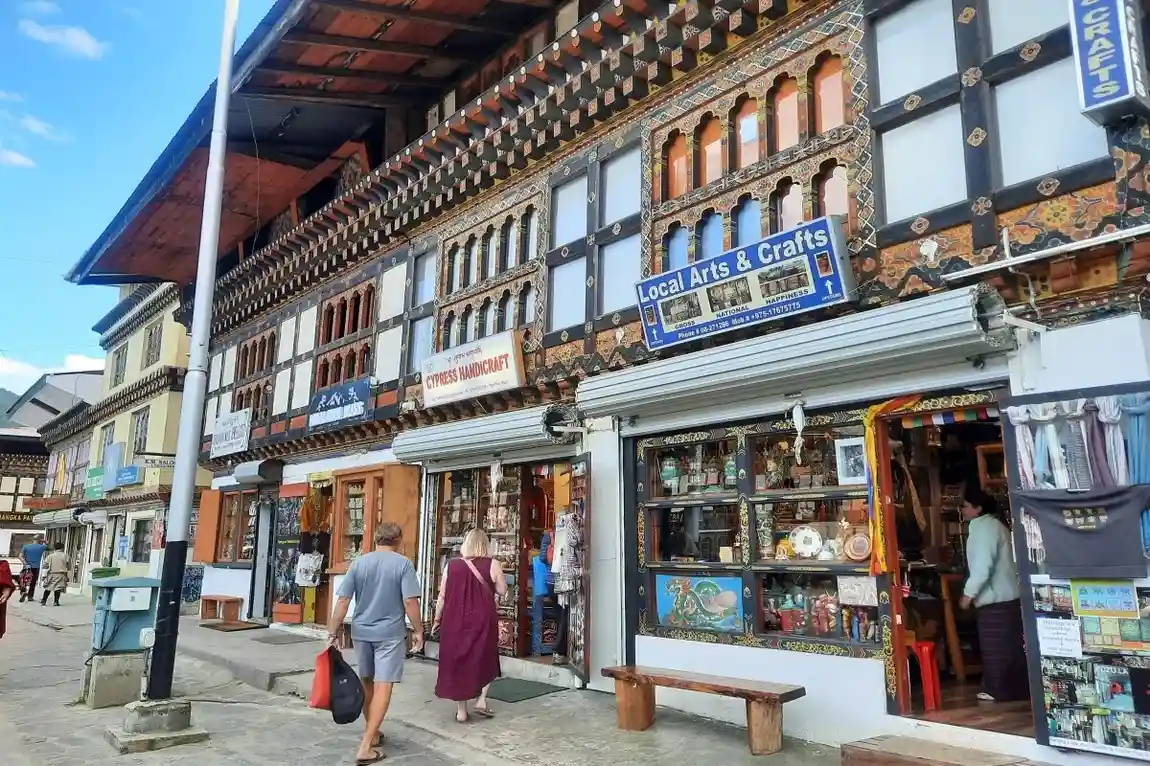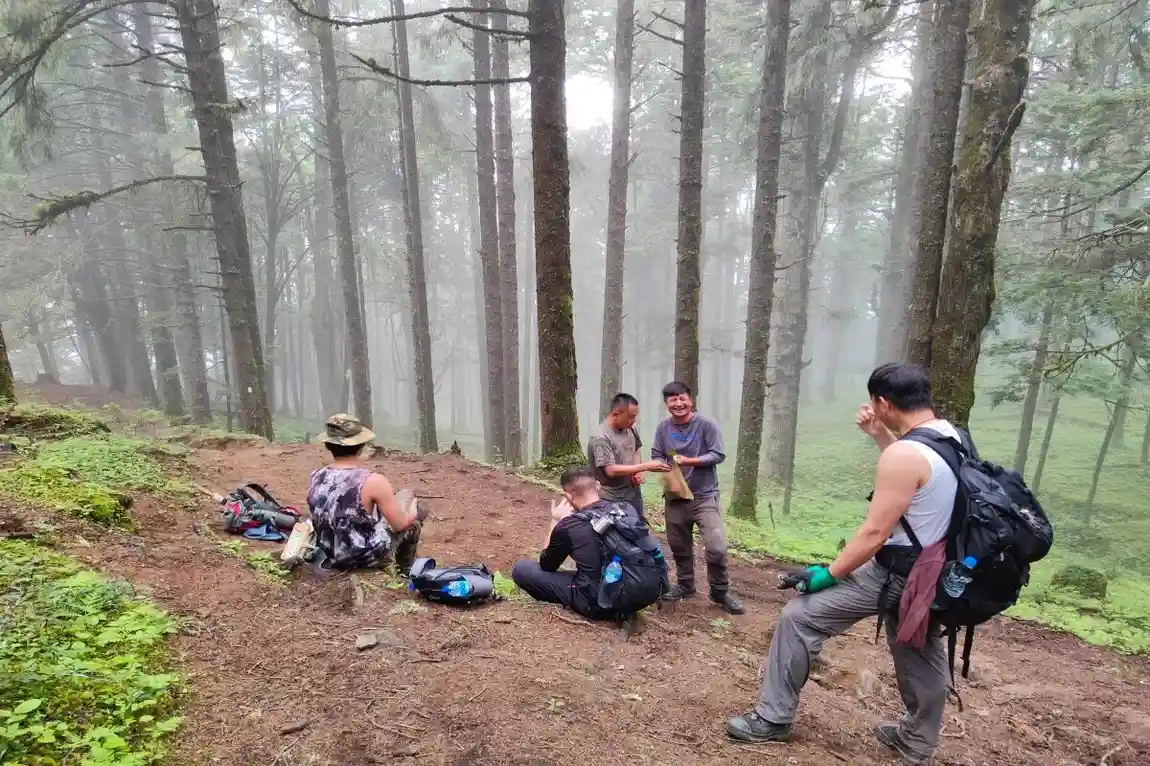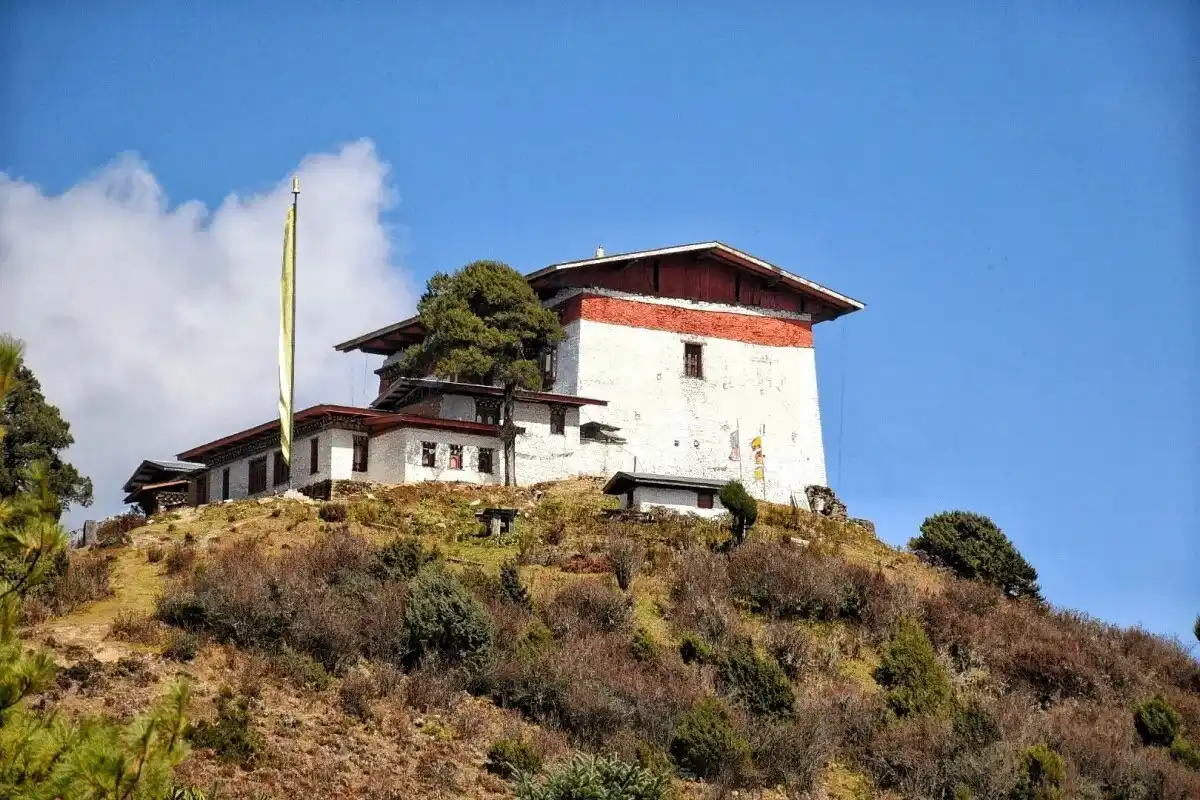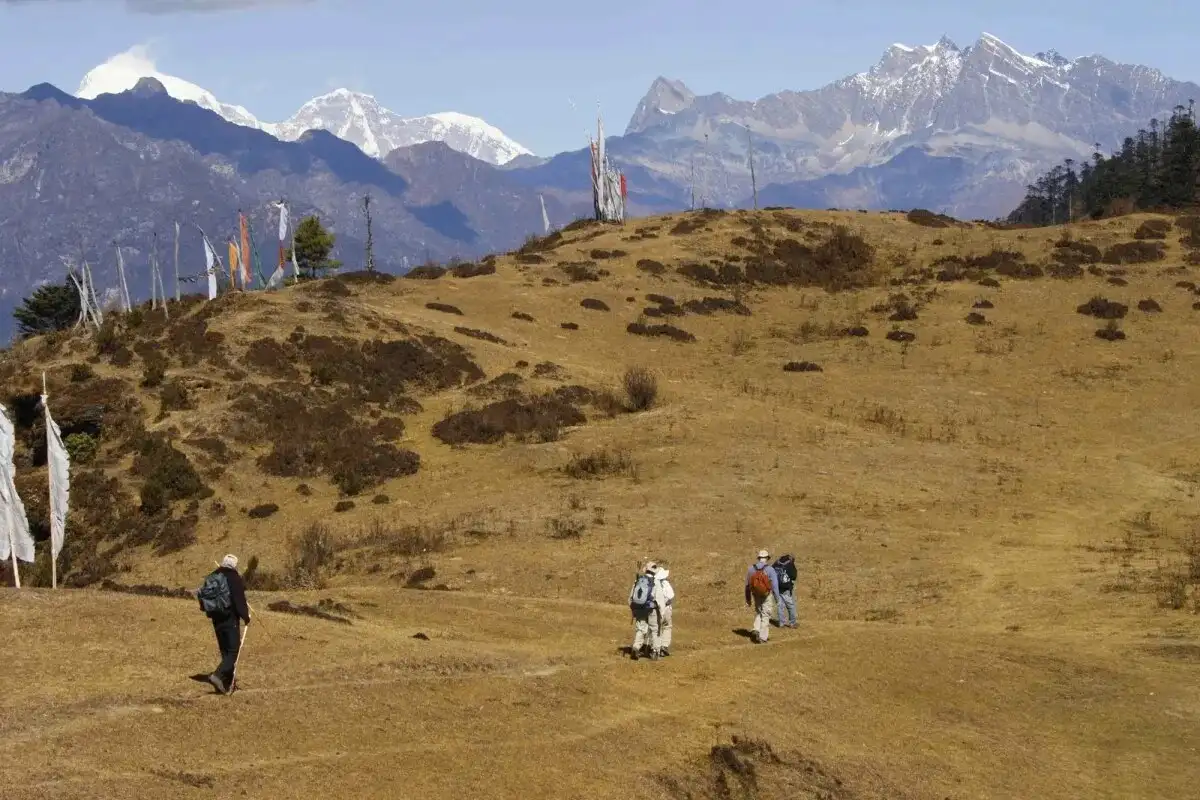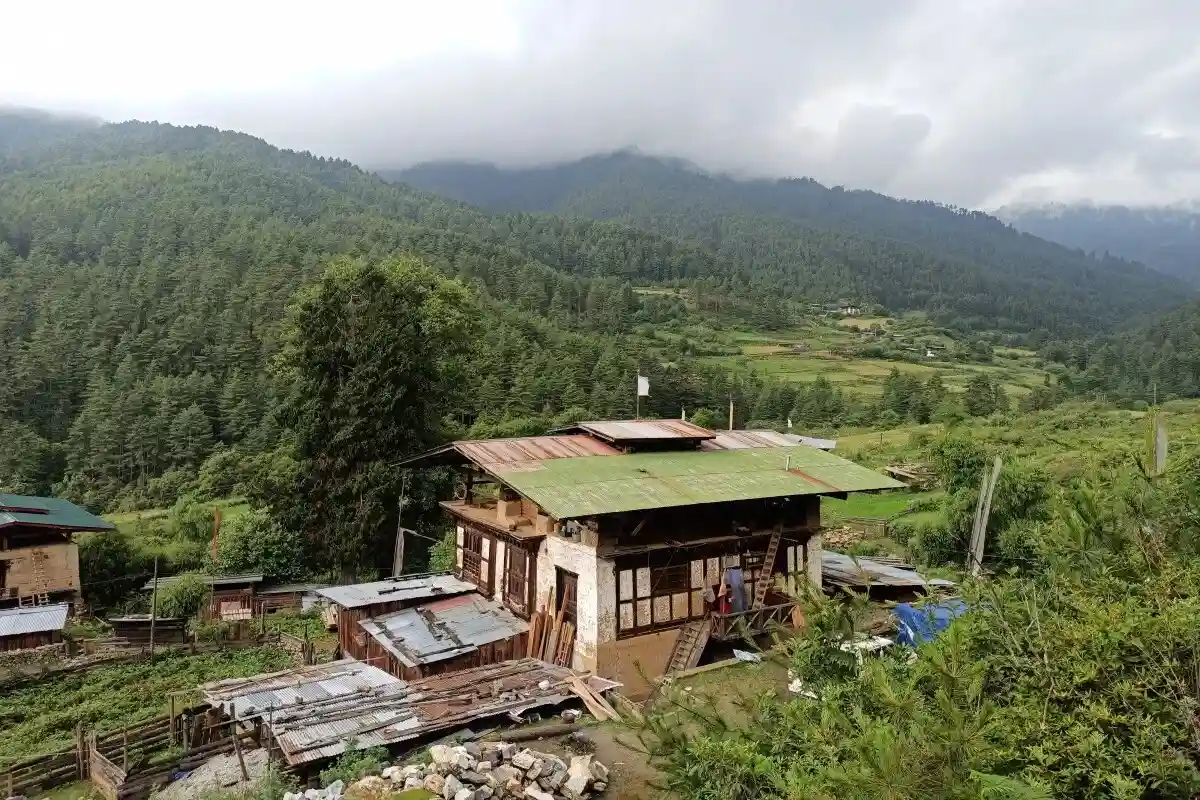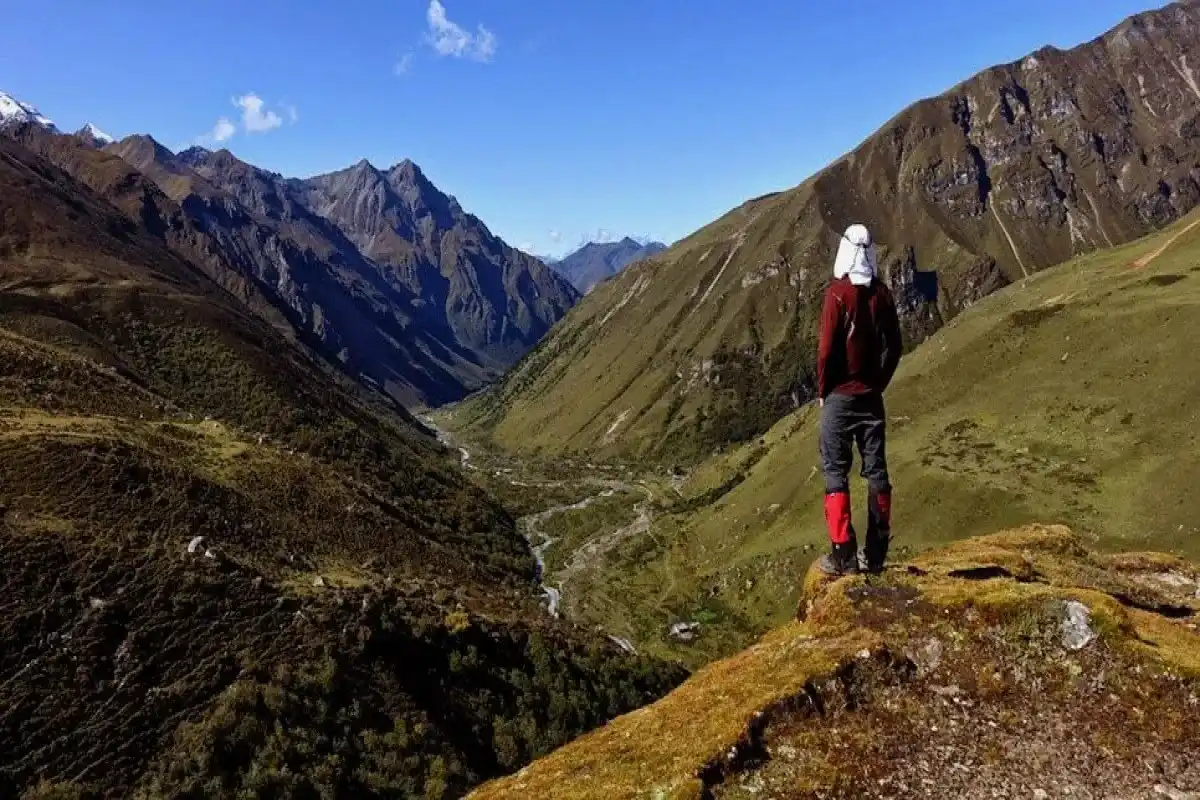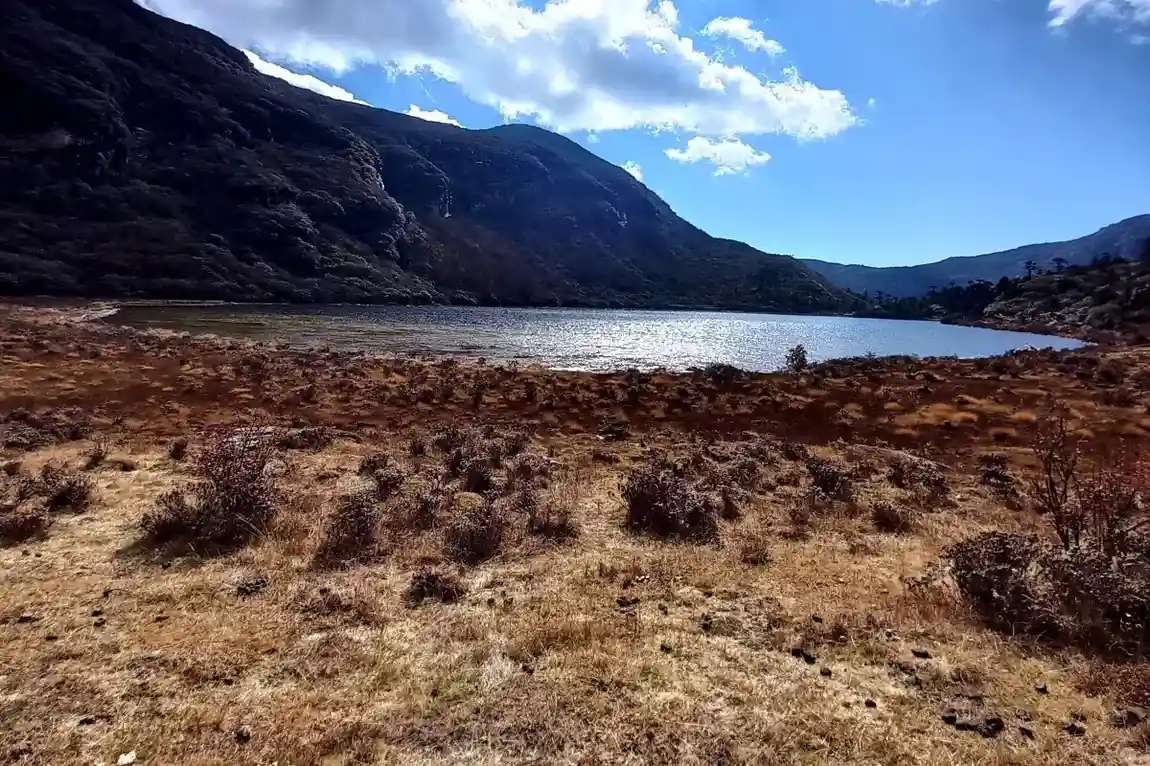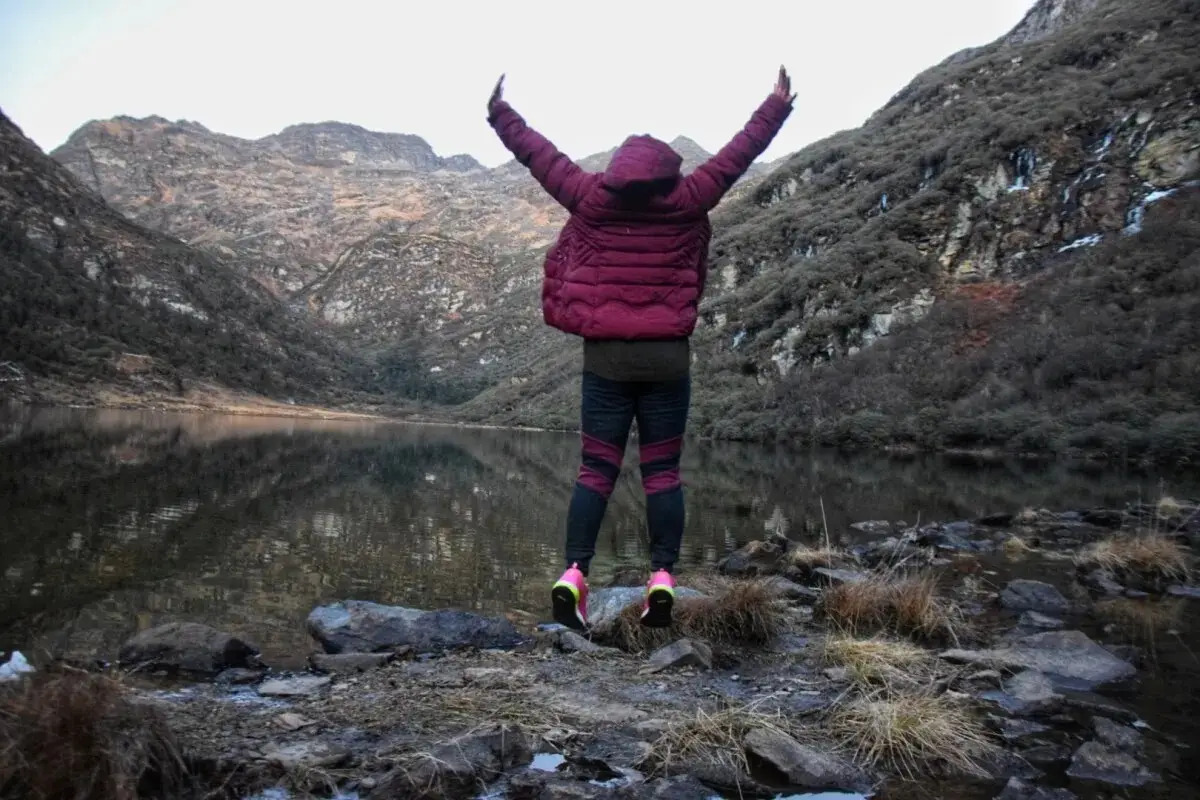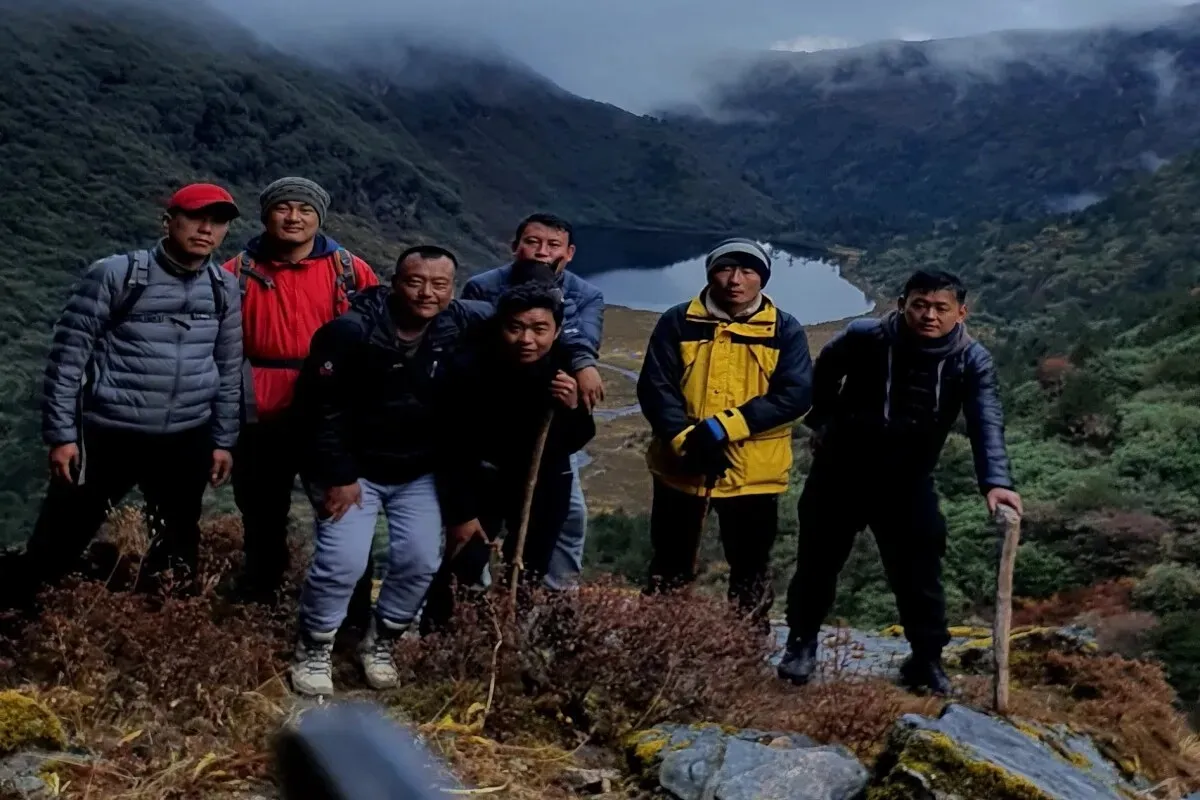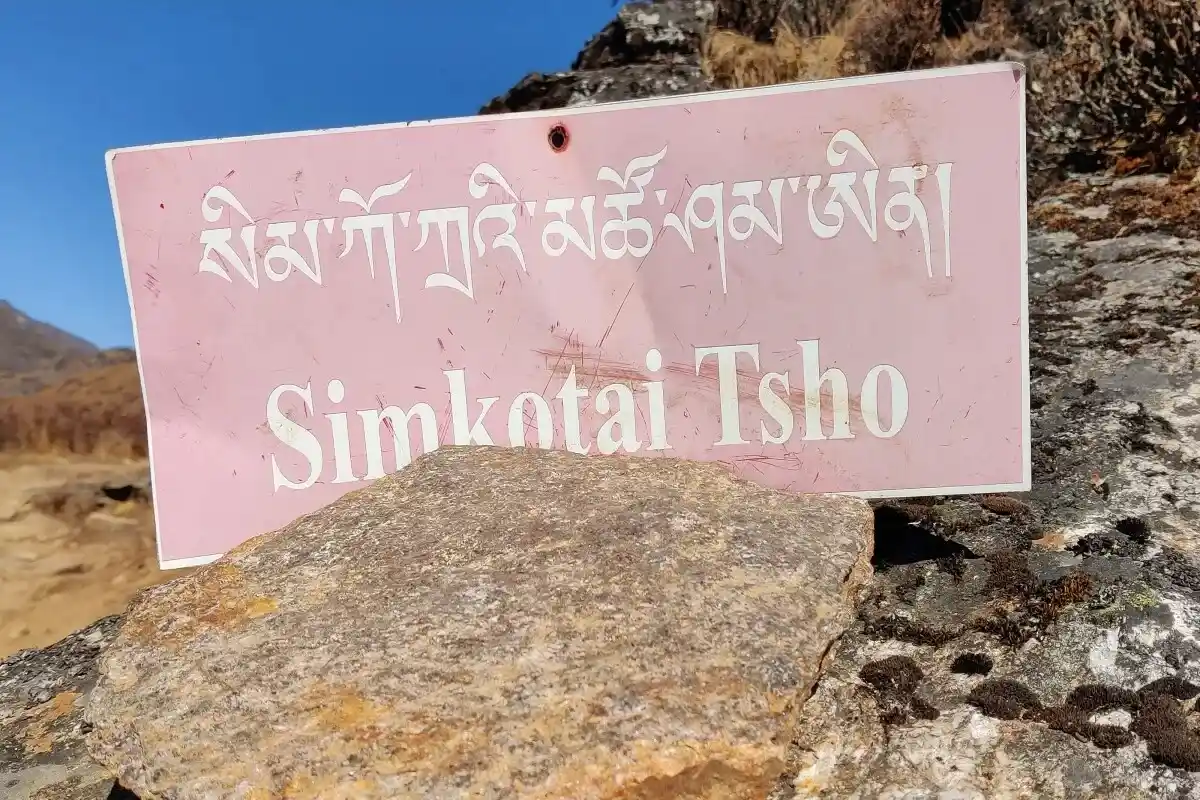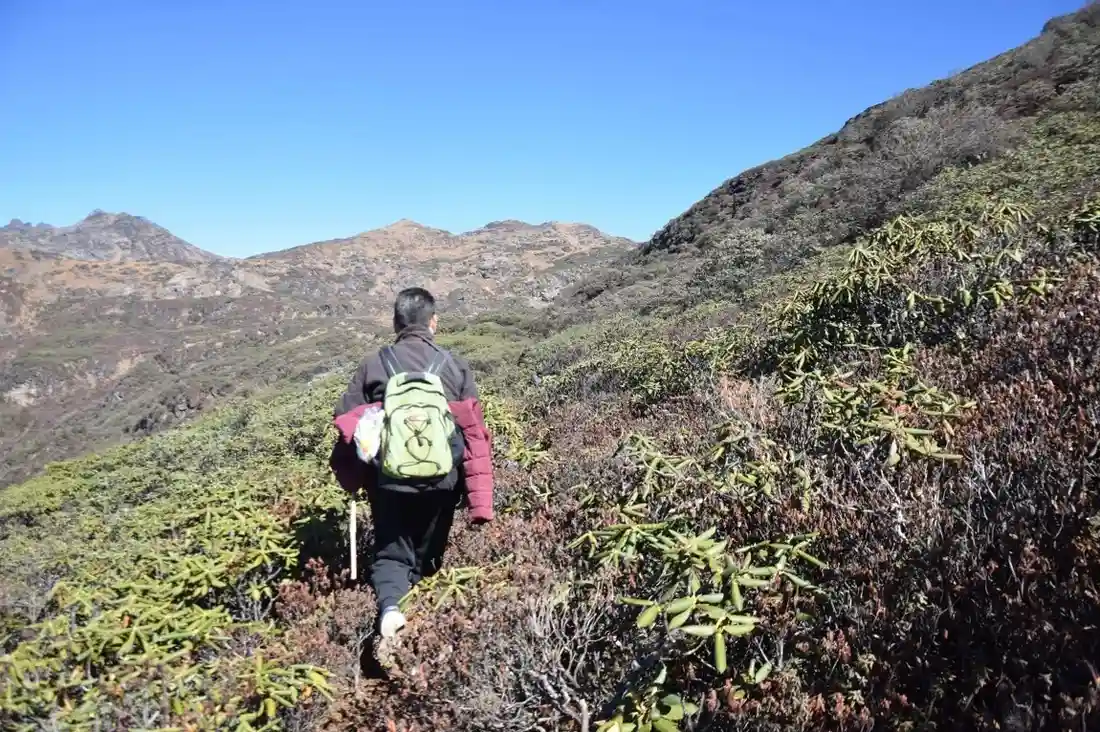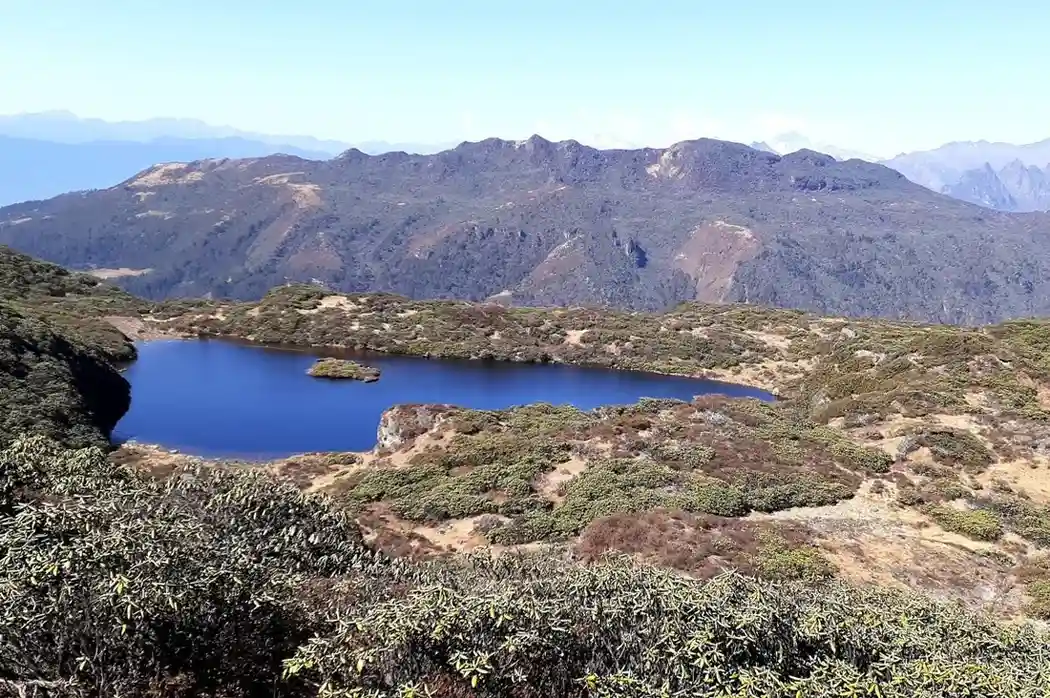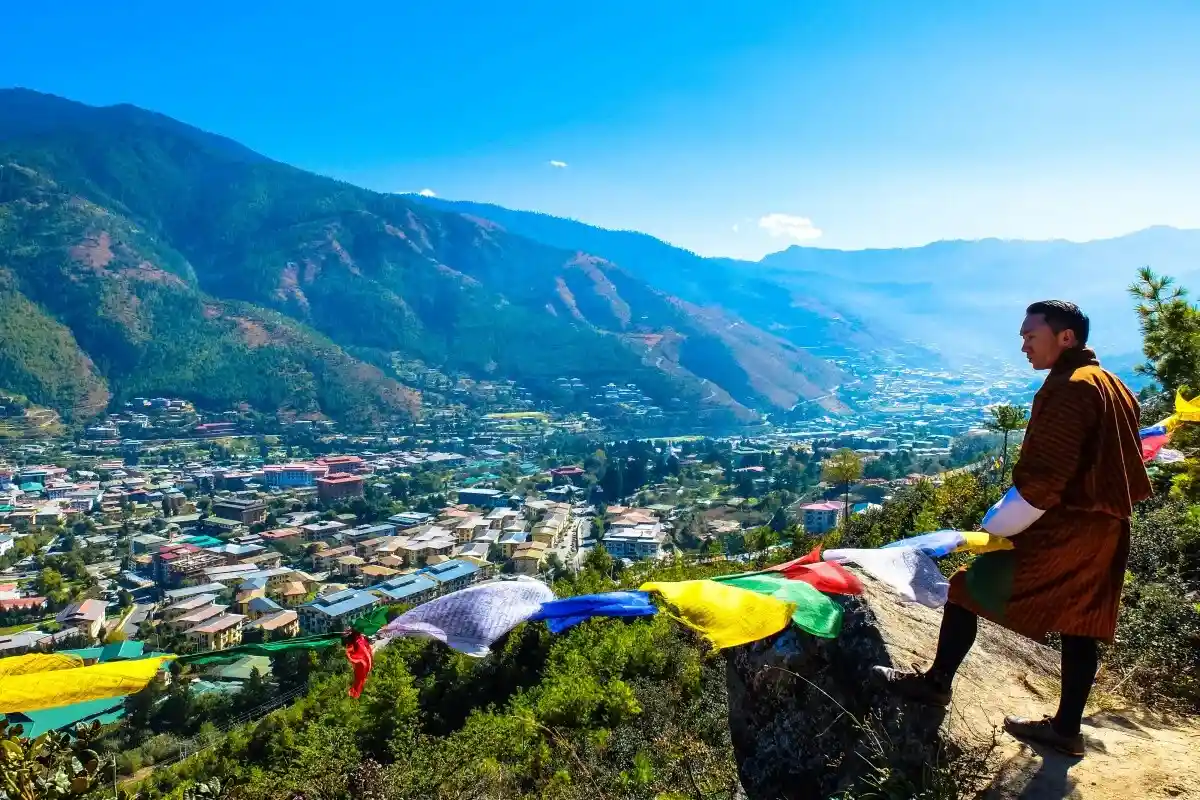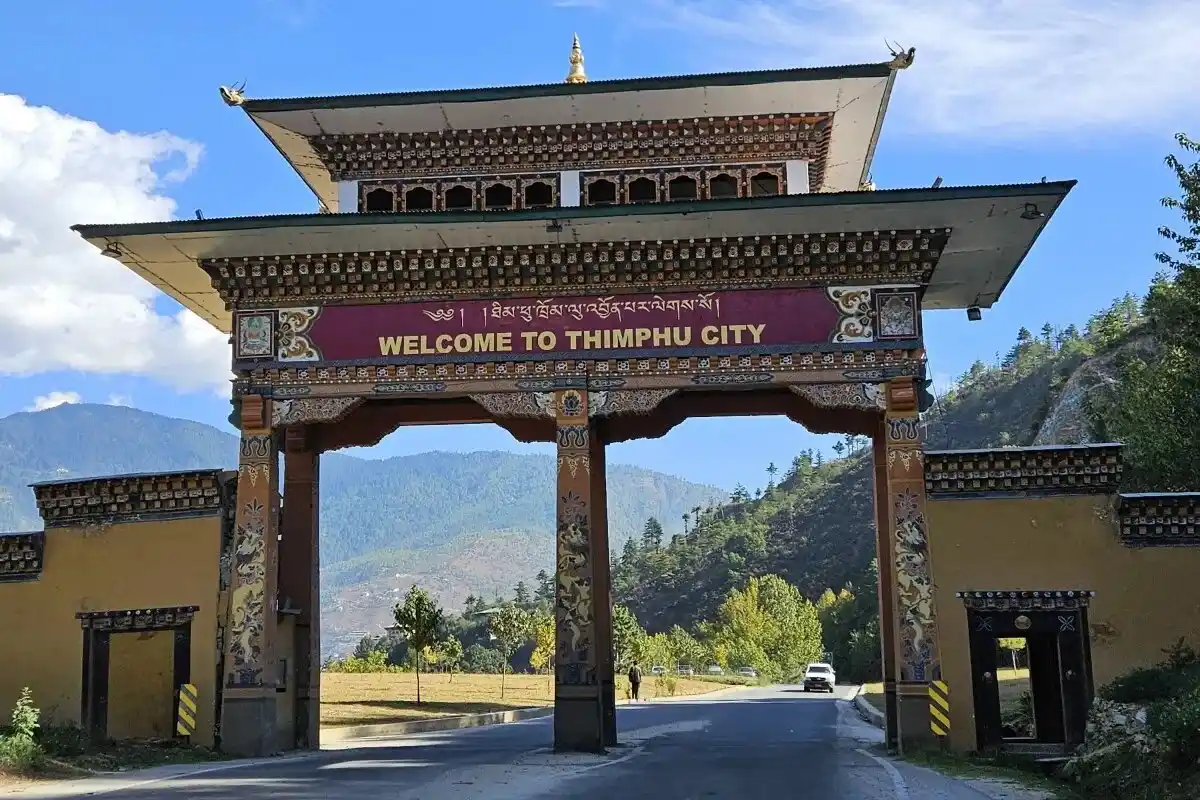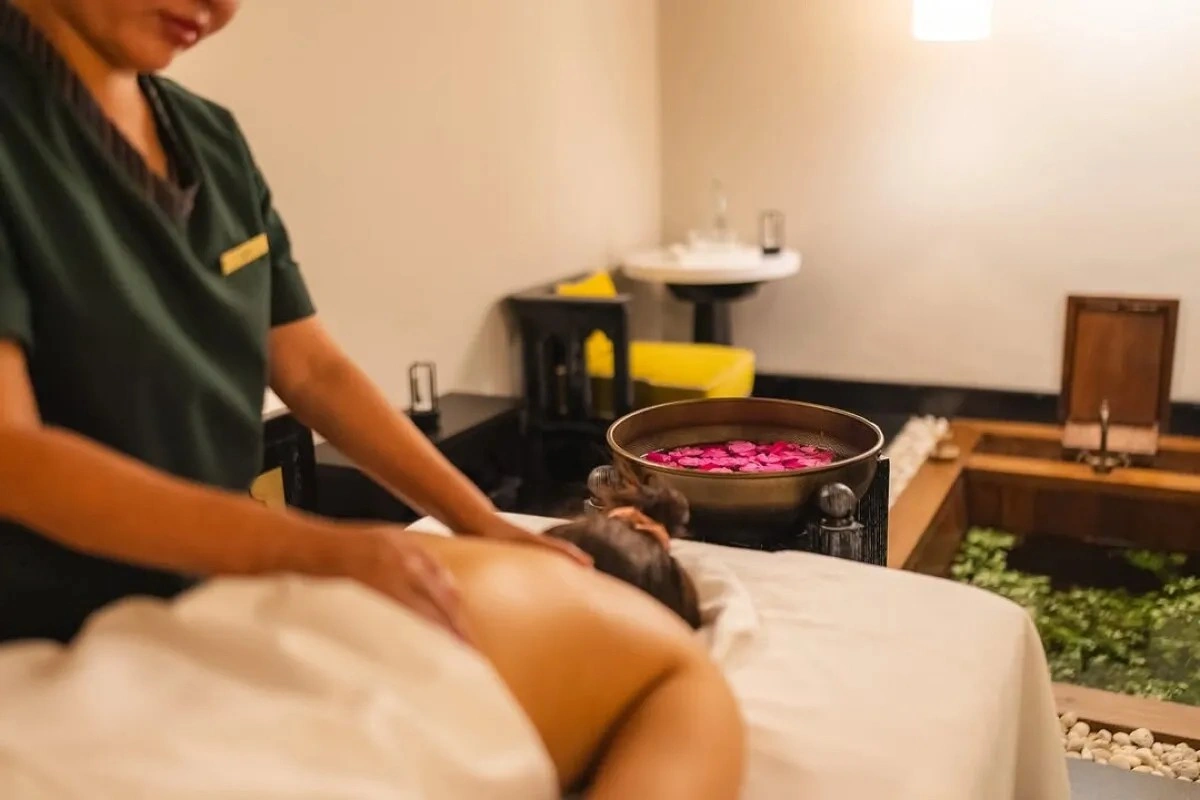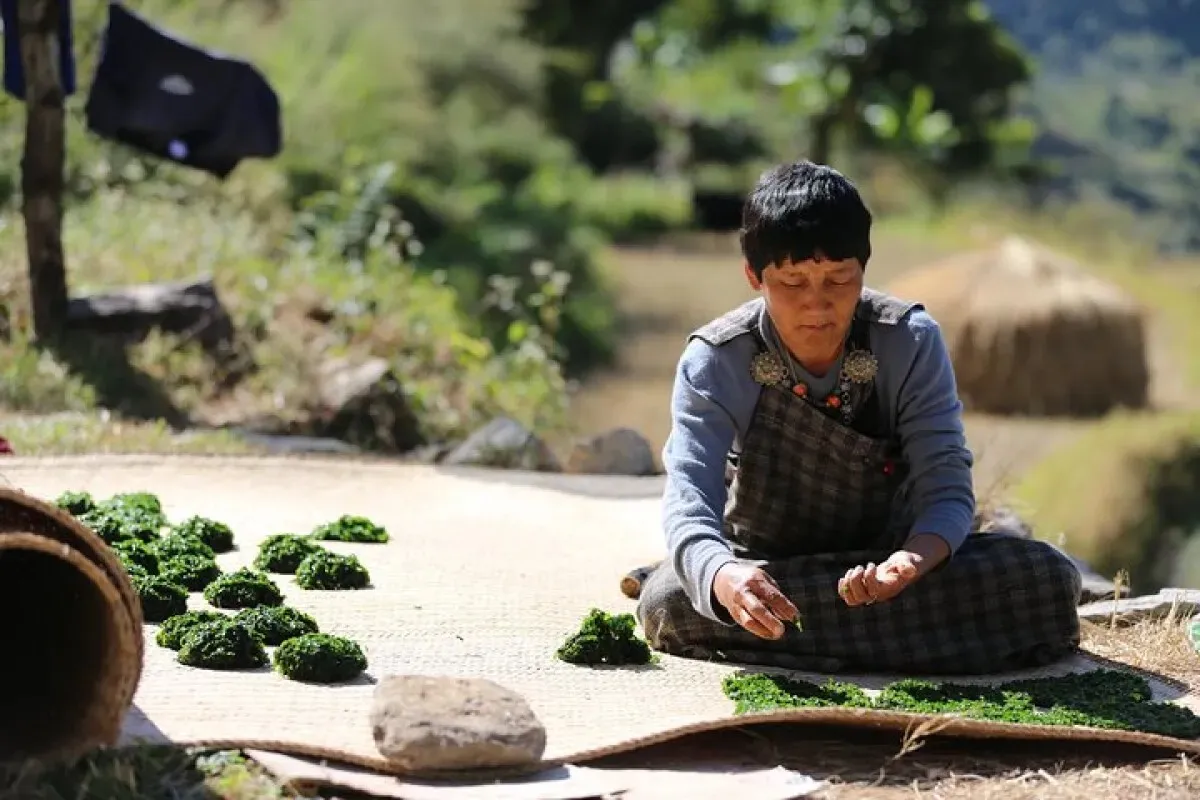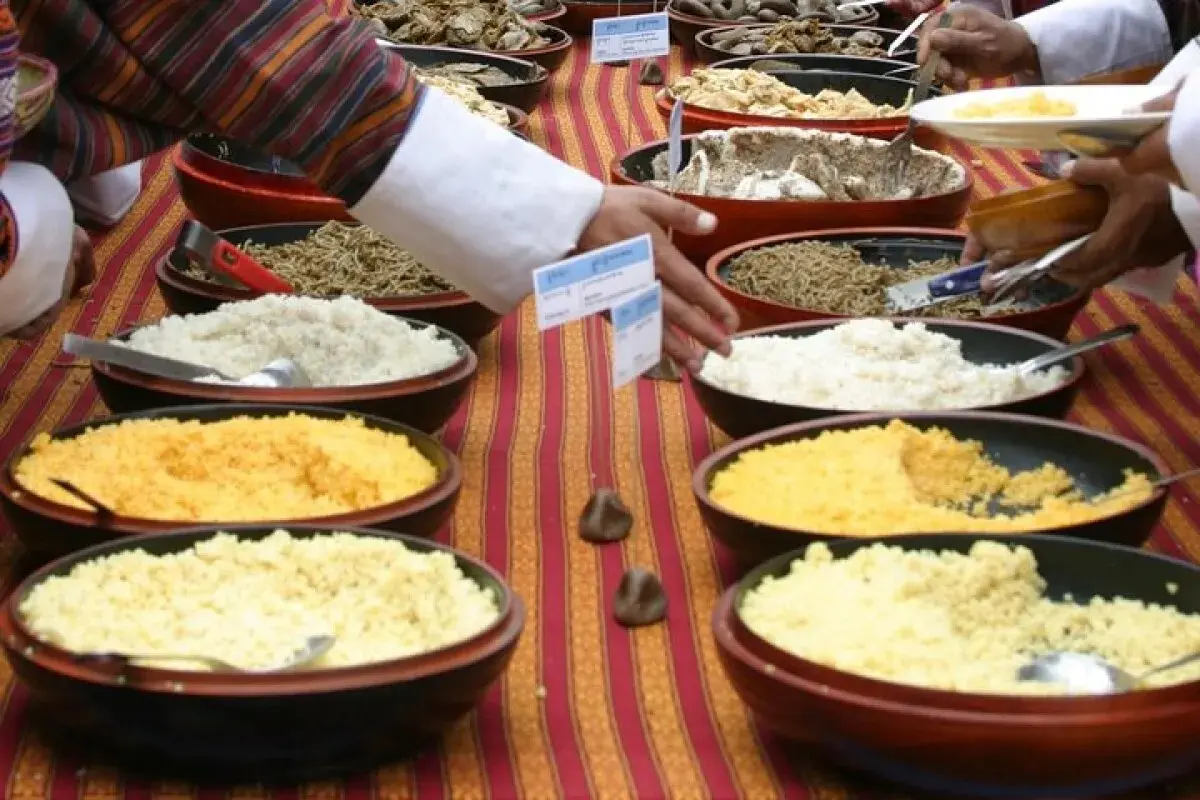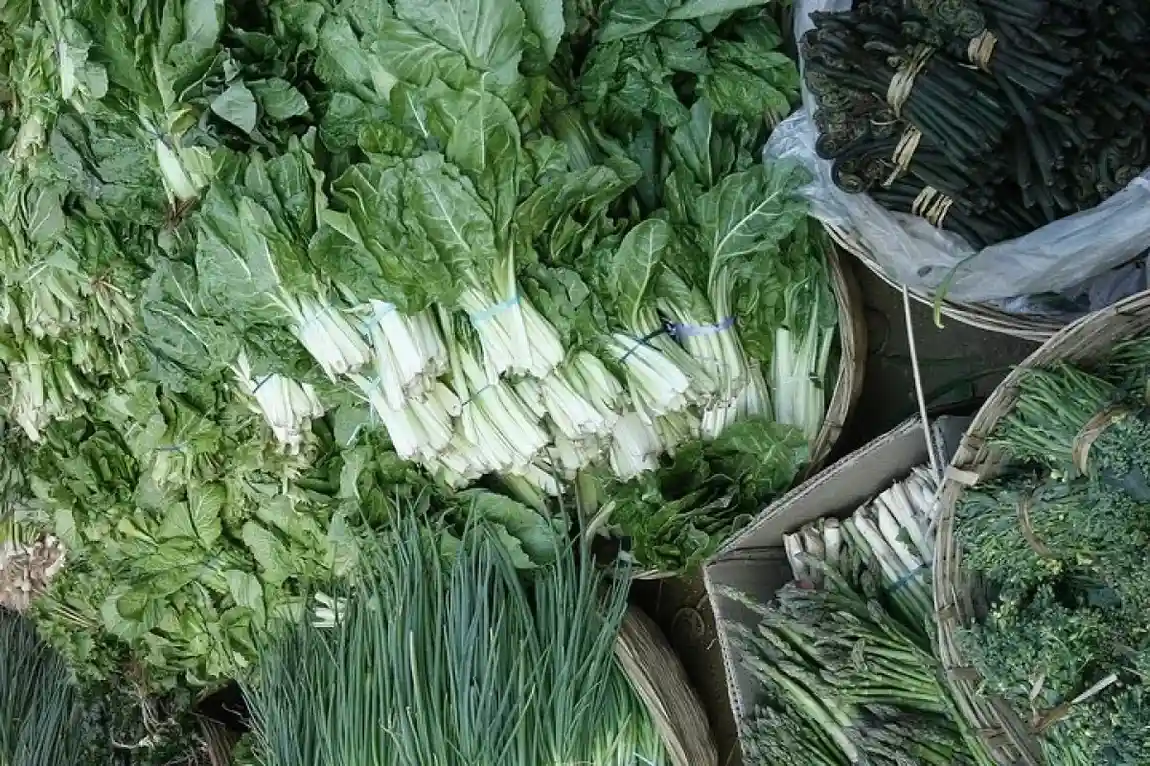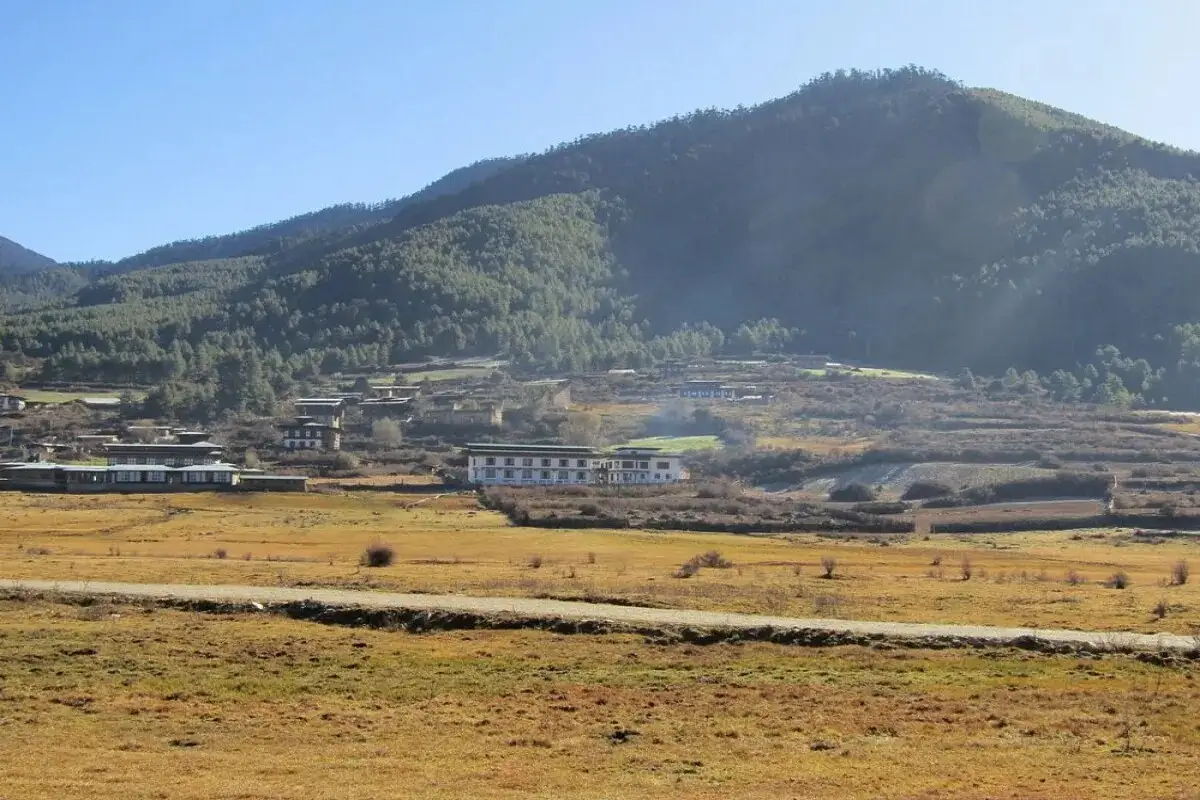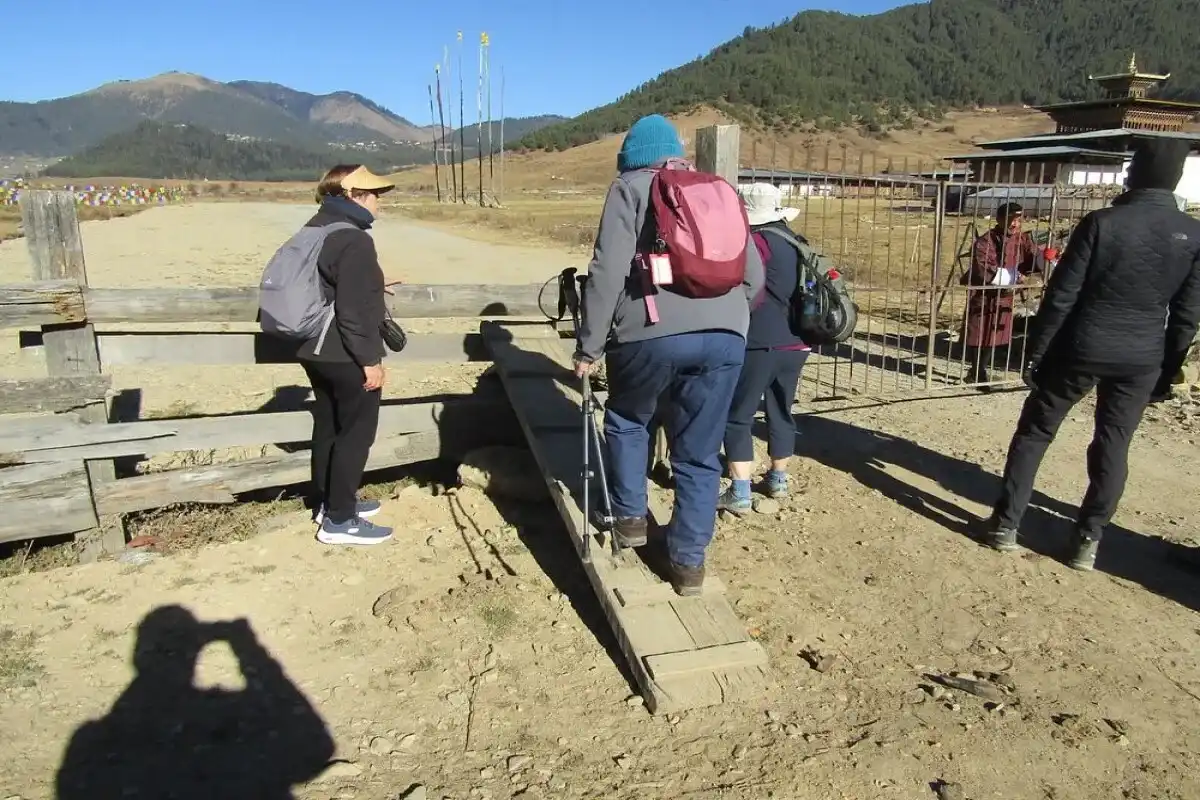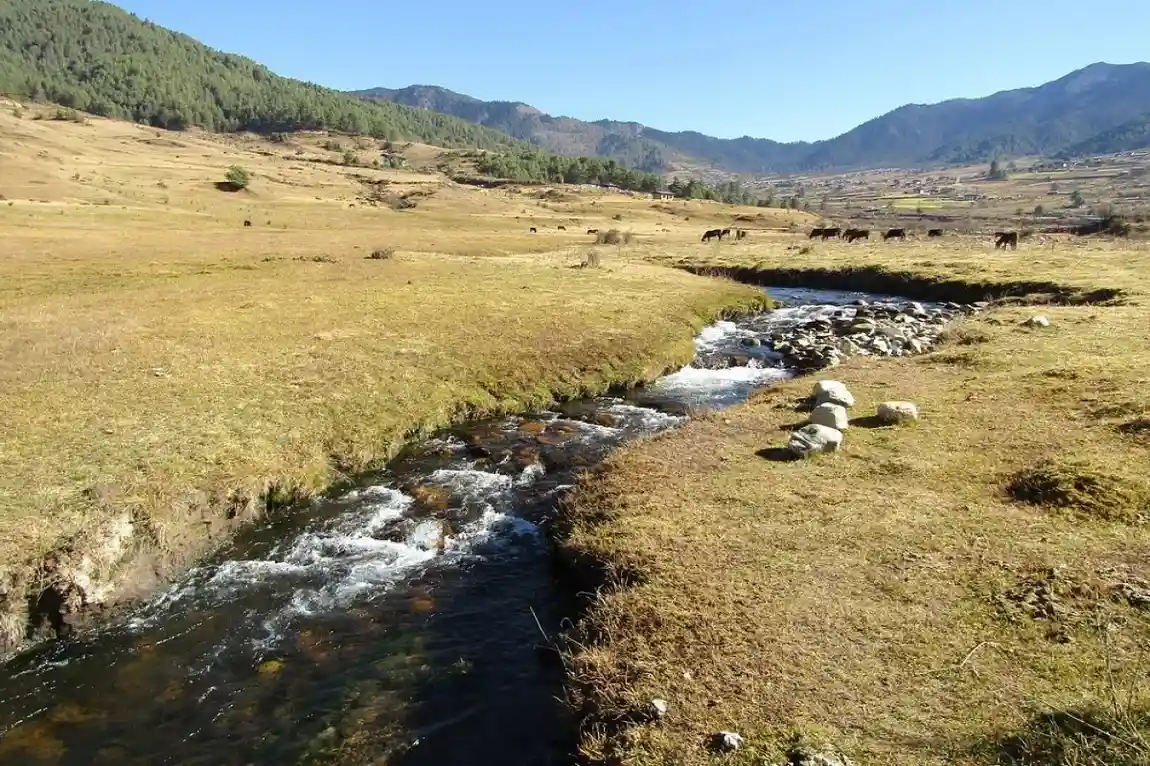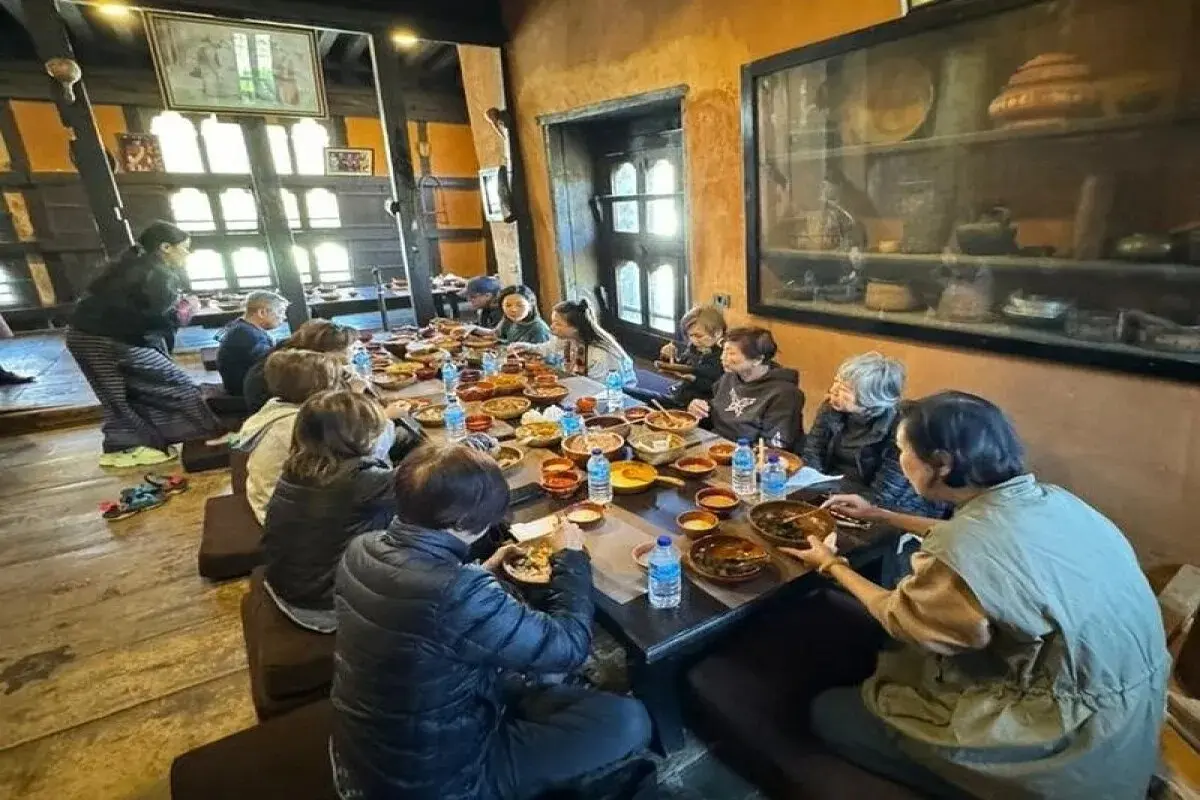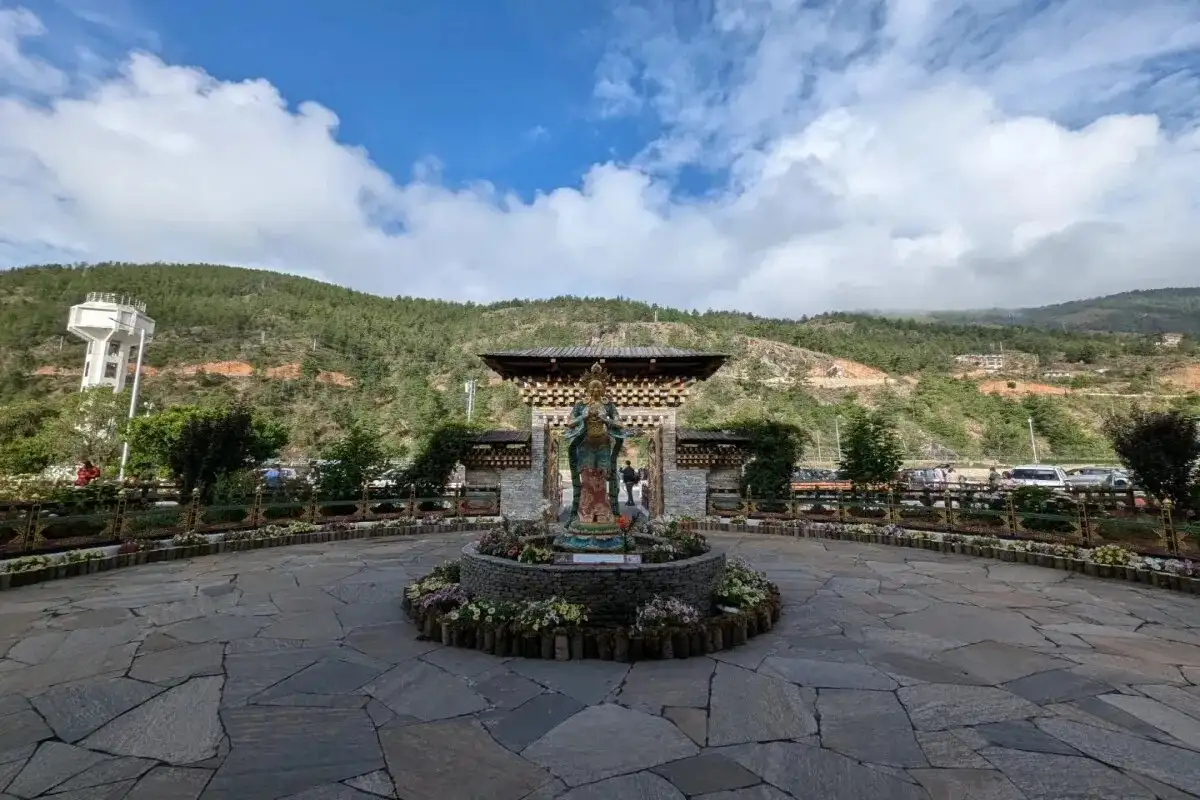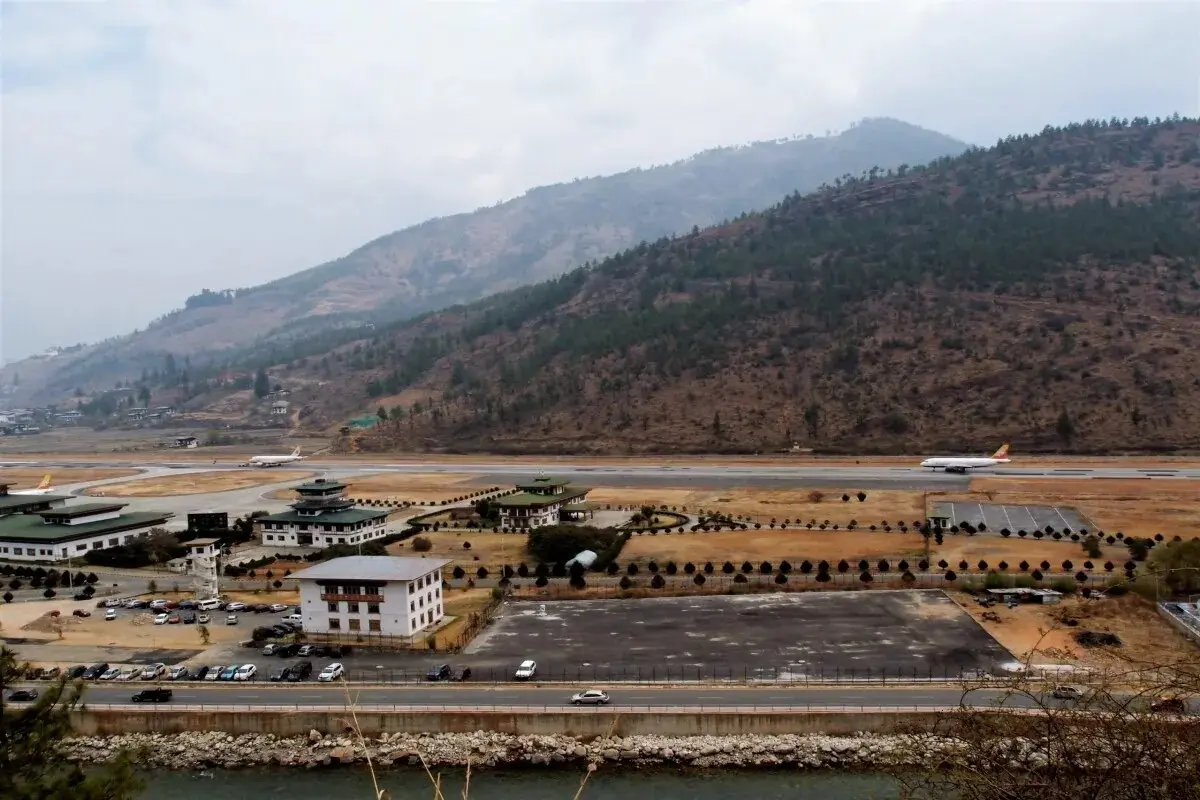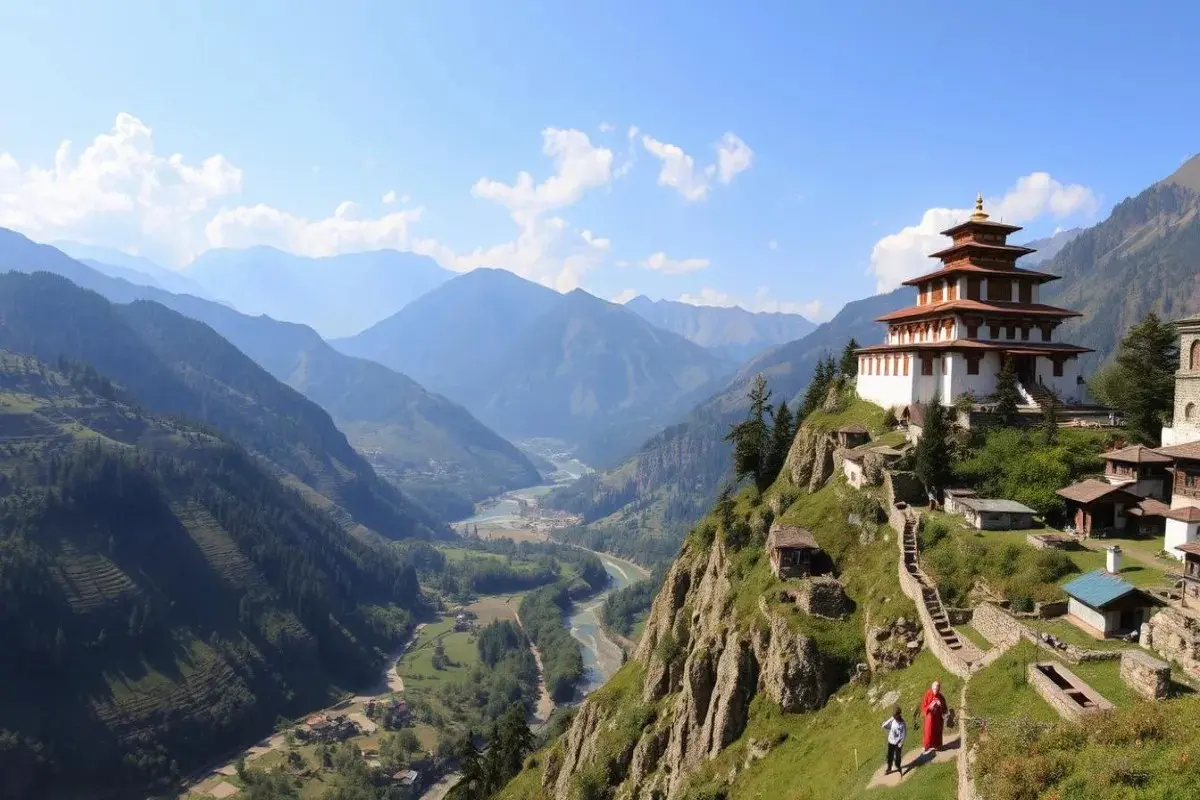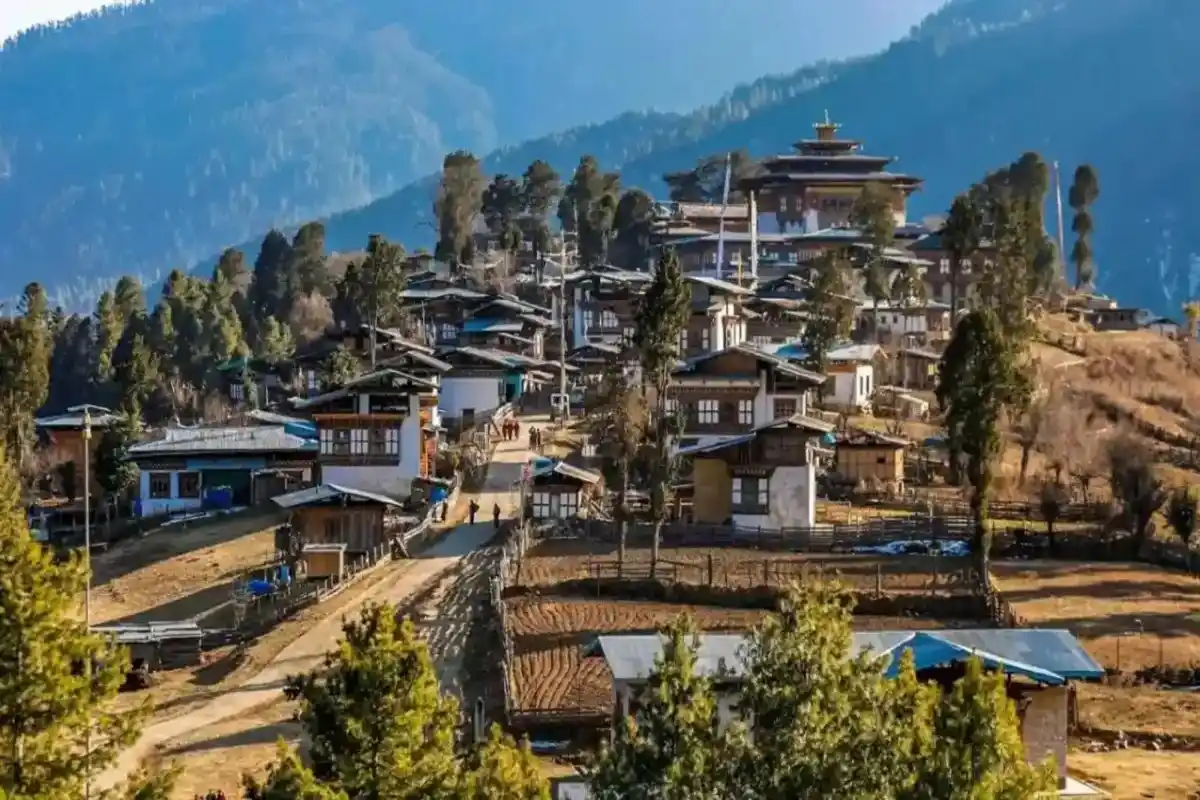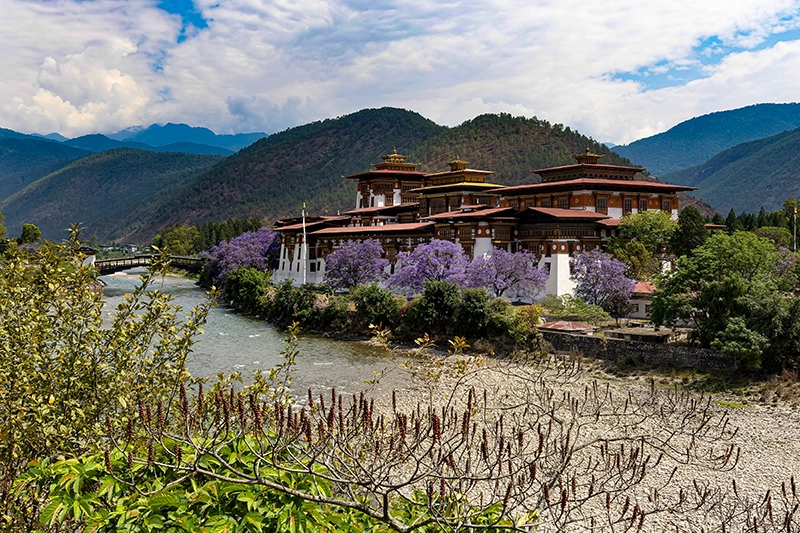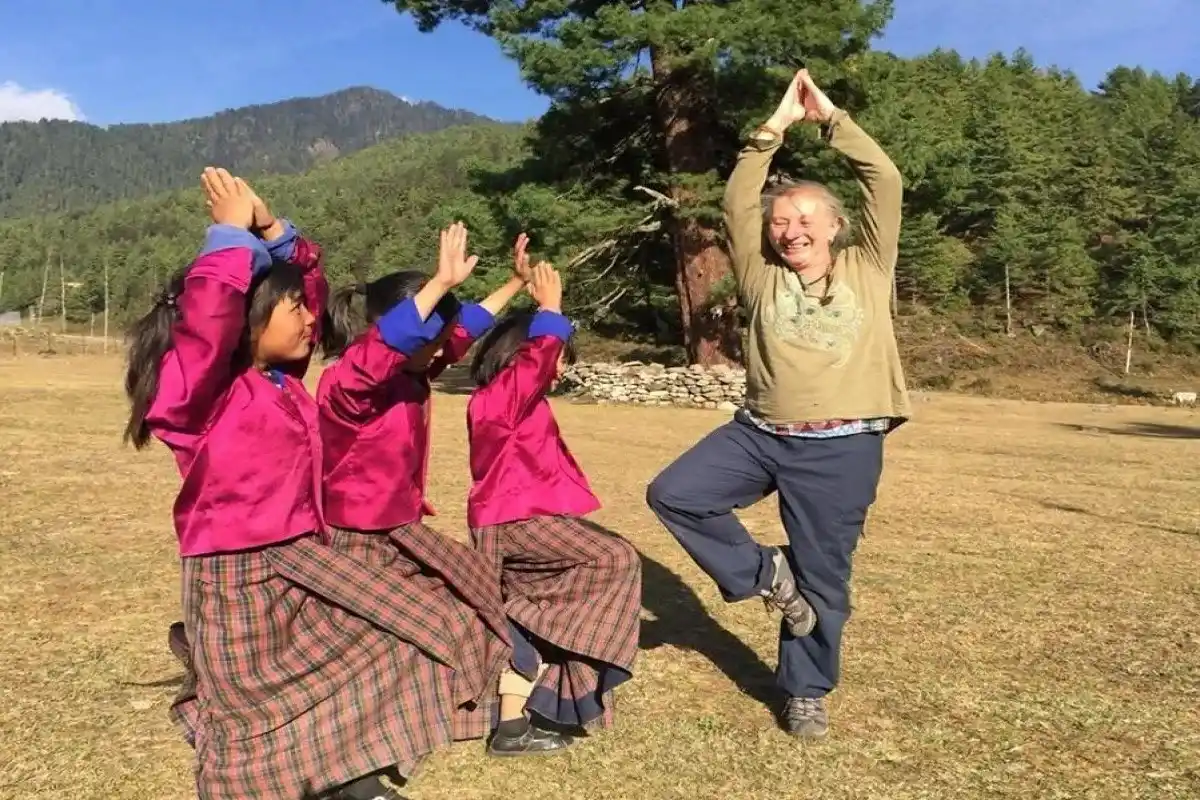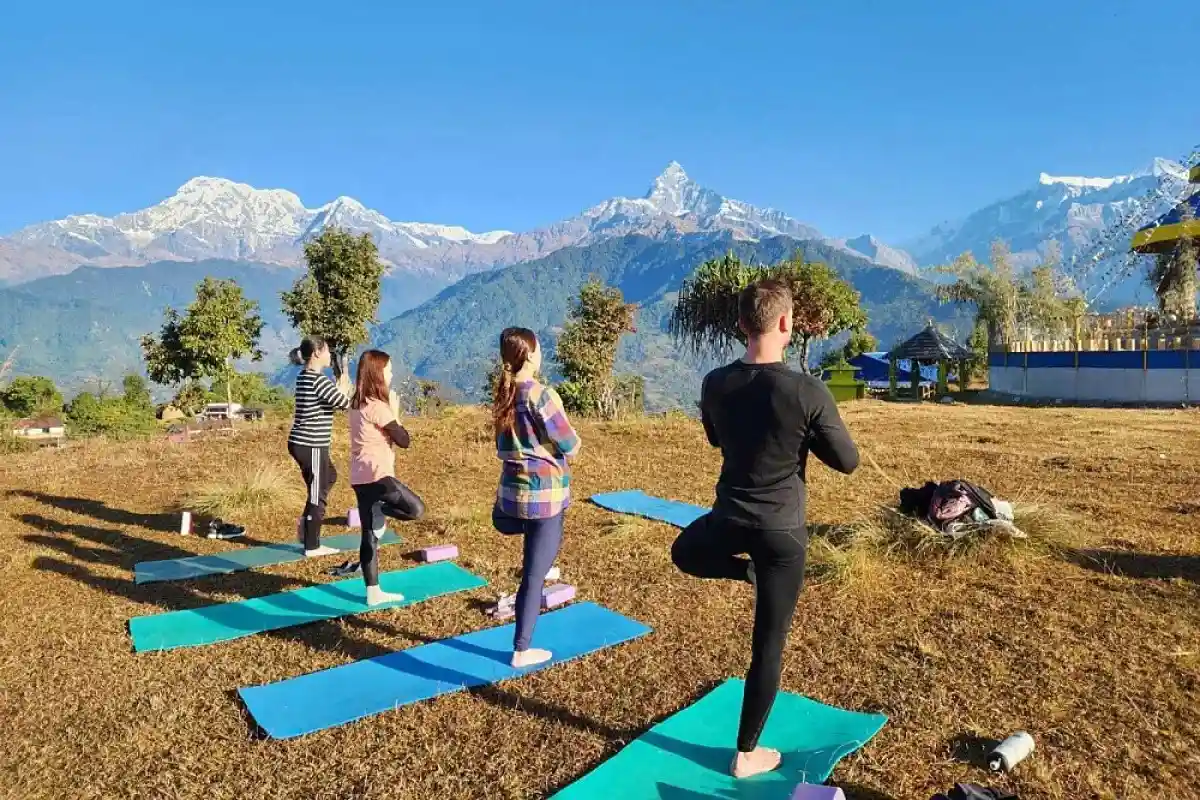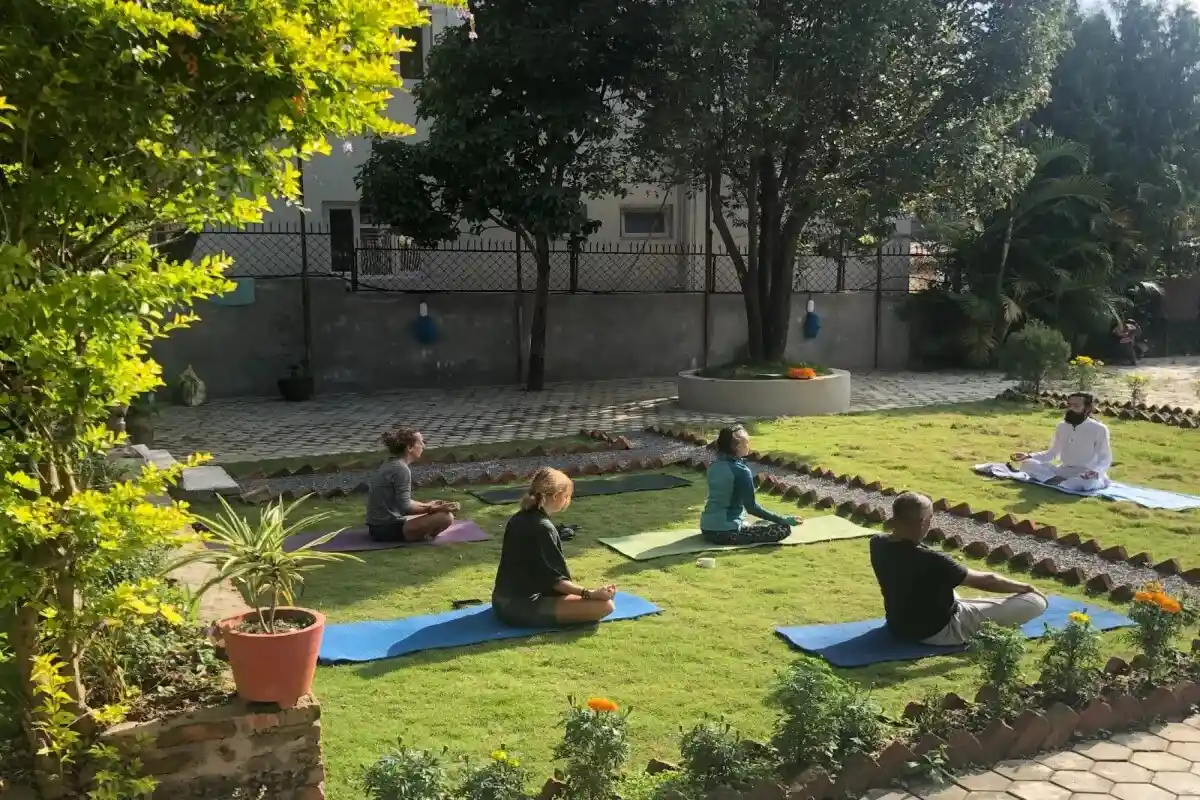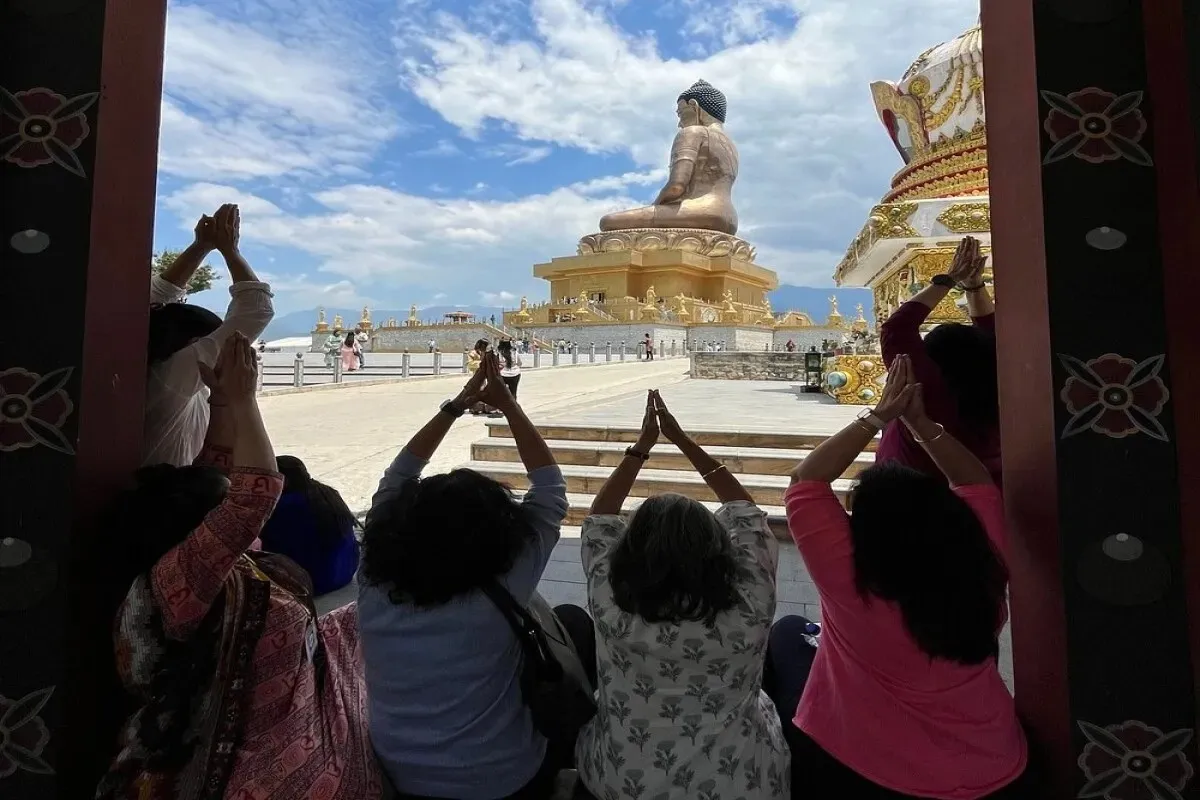Bhutan Spa and Wellness Trek - 9 Days
Welcome to Bhutan, the 9-day Trek of 9 days will provide you with the best experience of wellness activities and various spa treatments in the stunning landscape of Bhutan. This tour is especially prioritized for the Wellness seekers, who are conscious about their health, also for the individuals who want to get knowledge and techniques of Yoga practices, and for cultural and spiritual tourists.
Highlights
- Visit to Sacred Lakes & Monasteries
- Immersion in Bhutan’s Wellness Culture
- Explore Phobjikha Valley
- Experience Daily Yoga, Meditation & Breathing Practices
Trip Overview
You will visit sacred places such as Kyichu Lhakhang, Paro Dzong, and Gangtey Monastery, as well as trek through pristine and clean trails to the Jele Dzong, Jangchulakha, and Simkotra Tsho Lake, and relax in beautiful and calm valleys such as Phobjikha and Paro. Meanwhile, enjoy the use of aromatherapy, spas, and holistic healing conquests that reportedly make Bhutan one of the best places to get spiritual and psychological rejuvenation. Be it the Bhutan retreat with yoga and spa, a mindful walking trek, or the Bhutan wellness tour, a 9-day journey is nothing but the perfect mixture of experience, relaxation, and change.
Highlights of the tour
In this 9 days tour , you will get to explore different sacred monastries ,lakes and a chance to take part in wellness activities such as yoga and meditation practices,
Visit to Sacred Lakes & Monasteries
While traveling with Bhutan Spa and Wellness Trek, you get the chance to observe the adorable sights of Bhutan. Starting from various Sacred Lakes like Jimilang Tsho and Simkotra Tsho to traditional Monasteries such as Paro Dzong, Kyichu Lhakhang, Gangtey Monastery. The trial leads you to the destination where you can gain various information and knowledge related to spirituality and culture.
Immersion in Bhutan’s Wellness Culture
This journey is not only about experiencing the natural scenery but also a comprehensive introduction to a personalized well-being culture of Bhutan, based on spirit, balance, and holistic healing. The old technique of hot stone baths, aromatherapy, guided meditation, and walking makes visitors more participatory in ancient Bhutanese traditional knowledge, which covers the way to nourishment of the body, sensual peace, and takes them closer to peace of intellect, which remains the same for them even if something is not happening around them.
Explore Phobjikha Valley
Phobjikha Valley, one of the best sites you shouldn't miss while traveling in Bhutan surrounded by beautiful mountains and is mainly known for its peaceful environment, and was also used to be a place of spirituality. Black-necked crane spend their autumn in the valley, which makes the place more beautiful. The valley triggers the visitor to slow down and feel back into the world of nature. The best method of transport is on foot via the quiet route beside Gangtey Monastery, and this experience doubles up as a way of meditating.
Experience Daily Yoga, Meditation & Breathing Practices
Start every morning and evening with a mellow yoga session, relaxing meditation, and mindfulness breathing sessions in the most peaceful scenery of Bhutan. Be it a gentle morning stretch with a view of the mountains, or a morning breath work at a peaceful lake, those daily practices will create a sense of letting go, an open mind, and the ability to take all the healing power that comes with the trip, which is the most natural form of wellness.
Why should one go for a Bhutan wellness trek?
The Bhutan wellness trek is an unmatched healing retreat for those who are looking to have a break from chaos, reconnect with themselves, and meditate on something. This itinerary is a perfectly balanced combination of moderate trekking, yoga practice, meditation, traditional Bhutanese spa rituals, hot stone baths, and herbal healing treatment, thus offering full-scale holistic services. Visitors will intentionally practice breathing intensely in the scenery of mountains, enjoy delightful aromatherapy, and receive the calming energy of the sacred temples of the country. Facing the abundance of nature and the calm that comes along, most participants find it effortless to reduce stress levels, promote general wellness, and develop a strong sense of balance both in the mind and in the body.
Spiritual and Emotional Benefits of a Bhutan wellness trek?
A Bhutan wellness trek goes far beyond the definition of what hiking is; it is an inward journey. Exposure to clean scenery, silence, and holy places provides room to meditate and a deliberate pace. Daily disciplines: yoga, meditation, and mindful walking are techniques of harmonizing the mind, healing stress, and breeding deep calmness. With the worldly noise as well as the routines left at home, travelers end up going back to their inner selves. Most of them come back visibly lighter, more alert, and with a newfound energy in their soul, and there is considerable evidence that the experience is, indeed, a mental and spiritual reset.
You will visit sacred places such as Kyichu Lhakhang, Paro Dzong, and Gangtey Monastery, as well as trek through pristine and clean trails to the Jele Dzong, Jangchulakha, and Simkotra Tsho Lake, and relax in beautiful and calm valleys such as Phobjikha and Paro. Meanwhile, enjoy the use of aromatherapy, spas, and holistic healing conquests that reportedly make Bhutan one of the best places to get spiritual and psychological rejuvenation. Be it the Bhutan retreat with yoga and spa, a mindful walking trek, or the Bhutan wellness tour, a 9-day journey is nothing but the perfect mixture of experience, relaxation, and change.
Highlights of the tour
In this 9 days tour , you will get to explore different sacred monastries ,lakes and a chance to take part in wellness activities such as yoga and meditation practices,
Visit to Sacred Lakes & Monasteries
While traveling with Bhutan Spa and Wellness Trek, you get the chance to observe the adorable sights of Bhutan. Starting from various Sacred Lakes like Jimilang Tsho and Simkotra Tsho to traditional Monasteries such as Paro Dzong, Kyichu Lhakhang, Gangtey Monastery. The trial leads you to the destination where you can gain various information and knowledge related to spirituality and culture.
Immersion in Bhutan’s Wellness Culture
This journey is not only about experiencing the natural scenery but also a comprehensive introduction to a personalized well-being culture of Bhutan, based on spirit, balance, and holistic healing. The old technique of hot stone baths, aromatherapy, guided meditation, and walking makes visitors more participatory in ancient Bhutanese traditional knowledge, which covers the way to nourishment of the body, sensual peace, and takes them closer to peace of intellect, which remains the same for them even if something is not happening around them.
Explore Phobjikha Valley
Phobjikha Valley, one of the best sites you shouldn't miss while traveling in Bhutan surrounded by beautiful mountains and is mainly known for its peaceful environment, and was also used to be a place of spirituality. Black-necked crane spend their autumn in the valley, which makes the place more beautiful. The valley triggers the visitor to slow down and feel back into the world of nature. The best method of transport is on foot via the quiet route beside Gangtey Monastery, and this experience doubles up as a way of meditating.
Experience Daily Yoga, Meditation & Breathing Practices
Start every morning and evening with a mellow yoga session, relaxing meditation, and mindfulness breathing sessions in the most peaceful scenery of Bhutan. Be it a gentle morning stretch with a view of the mountains, or a morning breath work at a peaceful lake, those daily practices will create a sense of letting go, an open mind, and the ability to take all the healing power that comes with the trip, which is the most natural form of wellness.
Why should one go for a Bhutan wellness trek?
The Bhutan wellness trek is an unmatched healing retreat for those who are looking to have a break from chaos, reconnect with themselves, and meditate on something. This itinerary is a perfectly balanced combination of moderate trekking, yoga practice, meditation, traditional Bhutanese spa rituals, hot stone baths, and herbal healing treatment, thus offering full-scale holistic services. Visitors will intentionally practice breathing intensely in the scenery of mountains, enjoy delightful aromatherapy, and receive the calming energy of the sacred temples of the country. Facing the abundance of nature and the calm that comes along, most participants find it effortless to reduce stress levels, promote general wellness, and develop a strong sense of balance both in the mind and in the body.
Spiritual and Emotional Benefits of a Bhutan wellness trek?
A Bhutan wellness trek goes far beyond the definition of what hiking is; it is an inward journey. Exposure to clean scenery, silence, and holy places provides room to meditate and a deliberate pace. Daily disciplines: yoga, meditation, and mindful walking are techniques of harmonizing the mind, healing stress, and breeding deep calmness. With the worldly noise as well as the routines left at home, travelers end up going back to their inner selves. Most of them come back visibly lighter, more alert, and with a newfound energy in their soul, and there is considerable evidence that the experience is, indeed, a mental and spiritual reset.
Short Itinerary
Arrive in Paro, settle into hotel, visit Paro Dzong and Kyichu Lhakhang
Trek to Jele Dzong (3,450m) with yoga, breathing exercises and peaceful forest walk
Trek to Jangchulakha (3,780m) practicing mindful walking through forests and grasslands
Continue trekking to Jimilangtso Lake (3,880m), lakeside meditation and nature reflection
Trek to Simkotra Tsho Lake (4,130m), yoga and breathing exercises by the lake
Drive to Thimphu, visit wellness center for traditional massage and steam bath, explore
Participate in Bhutanese wellness cooking class, evening yoga for relaxation
Explore Phobjikha Valley and Gangtey Monastery, return to Paro for aromatherapy massage
Depart from Paro, transfer to airport with lasting wellness and spiritual renewal
Bhutan Spa and Wellness Trek Itinerary
As travellers get off the planes in the Paro International Airport, they are instantly greeted with a fresh mountain air aroma and majestic views of the Himalaya Mountains. A polite welcome is in store, and once you have found yourself well-placed accommodations, you should give yourself plenty of time to rest. After lunch, one can enjoy a relaxing walk in the town of Paro, and one can make the journey longer by having a Bhutanese lunch. Subsequently, two locations of special holistic value are worth visiting: Paro Dzong, the high fortress which towers over the valley, and Kyichu Lhakhang, the oldest and most sacred temple in the country. This journey thus makes the perfect start of any wellness trip in Bhutan.
The second day begins as you wake up in the fresh air with a stunning mountain range. Take part in yoga, body exercise, and take a sublime breathing session to exercise the mind and the body. Then it is good to take breakfast, after that, a sound walk across the pine forest and peaceful paths into the hills must begin. When gaining in altitude, nature sounds start to appear as a kind of silent meditation, and the panoramas are widening. Later on in the afternoon, you will reach Jele Dzong, a humble though elegant monastery, which is located above the clouds. Fun is there to soak in the peaceful aura and even to carry the restfulness to your heart, and get back to bed under the blanket of the starry night.
Start your third day with a light warm-up exercise to make ready for today's destination through various trials. This helps your muscles to calm down and refresh your body as a whole. The day itinerary takes you through a quiet forest and open grasslands to Jangchulakha. Find the art and process of mindful walking: focus on every step, your breath rhythm, as well as the surrounding nature sounds. The technique is simple but most effective, as it empowers and enables presence and being stable at the same time. Its performance provides a person with a direct refreshment, a deep feeling of calmness, and direct contact with the charisma of the place.
After a warm-up and breakfast then keep trekking towards the majesty of Jimilangtso Lake. The hike provides some tranquil landscapes of the hilly landscapes and distant mountains. When you get to the lake, take a break and have a drink from the still, glassy waters. Late afternoon, you will attend a guided lakeside meditation, where you'll find your peace, and we'll point out that this can be attained by letting the clean mountain air and silent environment help clean your head, stop your mind from going through negativity. It is a calm moment of silence, reflection, and just pure delight in nature's silence.
Today, you will be taken to Simkotra Tsho Lake, which is one of the highest points in your journey. The path is quiet, wide open, with a panoramic scene of the sky and the fresh mountain air. Proceed measuredly, observe your breath, and appreciate the silence. As you get to the lake, stop and regain balance and soak in the surrounding peace. Then, continue with just a short and orderly Yoga routine or a conscious breathing exercise to energize the body and clear the mind, thus making the night stay calm in the surrounding mountains.
As a sixth-day start, today you will have a scenic drive to the capital of Bhutan - Thimphu, full of colors and life. After arriving in the capital, explore the nearby wellness center where you will get a traditional Bhutanese massage along with an all-natural steam bath with herbs, which will make you feel very much relaxed and close to nature. This combination is exactly what the body needs to relax and be mentally clear after the hike. Then you should follow a slow walk around Thimphu town, visit shops nearby, take a hot drink in the nearby café, and enjoy the country peace.
Wake up to a beautiful morning, after having a light breakfast, take part in a cooking class to learn how to make yummy and nutritious dishes like Bhutanese cuisine with delightful fresh local ingredients. The sense of food and culture through involvement in culinary activity provides a good feeling and, source of self-improvement. A tired day can be concluded with an evening yoga session that will concentrate on cooling stretches with deep and full breaths. This kind of routine provides the body with rest, slows down the mind, and maintains good energy.
On the second last day of the Bhutan wellness tour, you can explore Phobjikha Valley, a large natural area with harmonious scenery and an untouched environment, which is appreciated for its views. Stop opposite the sacred Gangtey Monastery, the landmark that determines the spiritual nature of the valley, and enjoy its eternal and religious atmosphere. Next, head back to Paro and finish off your wellness journey with a restful aromatherapy massage- the perfect ending, which will leave you with a feeling of being energized, relaxed, and in utmost relaxation mode.
Wake up for the last time in the peaceful environment of Bhutan, have a delicious breakfast, and be ready to return to your home. You'll be driven to Paro International Airport, leave with a calm mind, a soft heart, and a store of precious impressions. The actual visible part of your journey may be finished, but the inner peace, clarity, and liveliness that you have experienced will remain. Bhutan wellness trek, as such, is not just a simple excursion to another state; it is an intellectual adventure wherein the journey ends with you regenerated, reborn, and tightly connected with yourself as a whole person.
Know Before You Travel
-
Best season for the tour:
The Bhutan Spa and Wellness Trek is preferably accomplished in spring, in the period between March and May, and autumn, in September-November. The rhododendrons are in full swing, the mountain air is fresh, and the weather is pleasant during spring, which is the best time to take a trek and other outdoor recreation activities. Autumn is a clear day with a pleasant temperature, and the beautiful Himalayas offer the best view of the natural world, which makes it a calm experience to meditate in the natural world to meditate. These are also the seasons and times of the biggest cultural festivals, which add additional depth to the journey to your experience with spirit. You can experience a peaceful environment, but very cold in the time of winter, and the trial will be disturbed because of rain in the time of summer and monsoon.
FAQs for Bhutan Spa and Wellness Trek
No previous experience is needed to participate in the Bhutan wellness trek. The journey will be of varying levels of difficulty, with many stops where you can rest, Stretch, moreover practice yoga and other wellness activities. As a result, the itinerary is particularly relevant to those who are willing to enjoy a serene atmosphere, nature, and relaxation.
The trek will involve such treatments as Hatha, Yin, and breathwork, specific to participants. The sessions are made to be friendly, and they are held outside with an optimum environment in which to calm the mind, opening up the body, and also getting one in a good condition to feel energized.
Bring comfortable clothing made of layers of pants – trekking pants, yoga clothes, a warm jacket, raincoat. Bring hiking shoes, socks, a hat, and sunglasses. Cold mornings are in order, so make sure you bring warm enough clothes.
The provision of basic first-aid assistance is part of the package, and assembly of major medical supplies is done with the expedition leader. However, the participants are highly recommended to bring along any personal medication that they might need.
Even though the trip does not have a standard age criterion, the expedition best fits travelers aged between 12 and 65 years who are in good general fitness. Itinerary is non-aggressive with time of relaxation in between, and hence suits the people who prefer both exercise and relaxation.
You need a visa and all necessary permits for your trip. These documents can not be received on the day of your arrival, so they must be processed before coming here. After you book a trip with us, we will manage these papers for you. Your Bhutan visa is arranged by Orrog as part of the package.
The main way to come to Bhutan is through Paro International Airport, which is well-connected to cities like Bangkok, Delhi, Kathmandu, and Singapore. Most people arrive by air, but if you plan to come via road, you can enter through Phuentsholing, located on the southern border with India, which is the most commonly used entry point.
It is recommended to apply for the visa at least 20 days before your planned departure date so that there is enough time for processing your Bhutan visa, finalizing your itinerary, and arranging your guides and transportation. Although visa processing itself is relatively fast once payment is received, early preparation helps avoid delays and ensures availability, especially during peak seasons (spring and autumn).
You don’t require a passport-size photo for the visa, but it is wise to carry at least 2–4 recent passport-sized photographs during your trip. These may be needed for local permits, registration, or when applying for a local SIM card upon arrival in Bhutan.
Yes, you can lengthen your stay in Bhutan either before or after your trip. Bhutan’s tourism model requires visitors to pay a Sustainable Development Fee (SDF) and a daily package cost, so any extra days will involve additional charges. Extensions are a great opportunity to explore cultural sites in Paro, Thimphu, or even add another short trip or day hike.
Yes, Bhutan requires full tour payment in advance before your visa can be processed and issued. The government of Bhutan regulates this policy to ensure that all travel arrangements are confirmed through a licensed Bhutanese tour operator. We are a licensed tour operator that ensures you have everything you need for a trouble-free trip.
Any personal expenses are not covered in the package like:
- Tips for your guide and other staff
- Bottled drinks and snacks(personal expense)
- Souvenirs or local crafts
Credit cards are easily accepted in major cities like Paro and Thimphu. But in remote areas, you may not have access to a card or an ATM. So, it is best to carry some cash before heading for the trip.
Tipping is not mandatory, but it is a widely appreciated gesture and a customary way to show gratitude for good service. The tipping guideline would be to give USD 5-10 per day as a tip for the guides and other staff.
Paro International Airport is the only international airport in Bhutan. It is well connected by flights from cities like Bangkok, Delhi, Kathmandu, and Singapore.
Yes, airport pick-up and drop-off are included in the package. We will have your guide and driver meet you at the airport and transport you to your hotel.
While Bhutan's roads are mostly paved, some parts are narrow, winding, and occasionally affected by weather. However, we ensure your travel is safe, well-maintained, and driven by an experienced professional throughout the journey.
The Bhutanese Ngultrum is used in Bhutan. All local transactions during the trip will be in BTN.
US Dollars (USD) are generally accepted at larger hotels, souvenir shops, and tour operators, particularly in Paro and Thimphu. However, it’s advisable to convert your currency to BTN for general purchases in rural areas. Other currencies like the Euro or the Pound are not commonly accepted directly.
No, credit or debit cards are not accepted on the trip, as it takes you through remote regions with no banking or electronic payment access. All trip-related payments like accommodation, meals, permits, etc, are paid in advance.
You can exchange foreign currency at the Paro International Airport, at banks, or through licensed money changers in cities like Thimphu and Paro. It's best to exchange enough cash before heading out on the trip.
The national language is Dzongkha, but many Bhutanese also speak English. If you speak English and are worried about communicating with the local people, you will have your guide as a translator.
Yes, all licensed tour guides in Bhutan are required to speak fluent English. Many are also trained in other languages such as German, Japanese, or French. Communication during the trip will be smooth and clear in English.
Most signboards, tourist maps, and information brochures are written in English, especially in tourist destinations like Paro, Thimphu, and trailheads. Directional signs along routes are often labeled in both Dzongkha and English.
No, learning Dzongkha is not at all needed for the trip, but knowing a few basic words like "Kuzu zangpo la" (Hello) or "Kadrinche la" (Thank you) is a good way to interact with the locals.
Language barriers are minimal, as your guide will handle all communication with locals and support staff. Your guide will translate for you during your interaction with the locals.
To greet people, you can greet with locals “Kuzu zangpo la” (Hello) by performing a slight bow. Most common greetings include physical greetings, such as shaking hands less visible, especially in rural areas.
Yes, but remember to seek permission, especially when taking photos of monks, locals, or temples. Please note that clicking photos is not allowed at most religious sites.
Visitors should dress modestly and respectfully. This means:
- Covering shoulders and knees
- Removing hats and sunglasses
- Not wearing shorts or sleeveless tops
This applies to both men and women.
Yes, Bhutanese society is deeply rooted in Buddhism and tradition. Here are some key taboos:
- Do not point your feet at people or sacred objects
- Never touch anyone on the head, as it is considered sacred
- Walk clockwise around temples, stupas, and religious monuments
- Avoid public displays of affection
While gifts are not expected, they may be accepted graciously if given with respect. It is advisable to consult with the guide before giving out anything.
Bhutan typically uses Type C, Type D, and Type G electrical outlets. Standard safe voltage is 230V and frequency is 50Hz; therefore, ensure that your equipment is compatible with this voltage.
Indeed, it is highly advised to take along a universal travel adapter, particularly one to fit a variety of types of plugs, because plugs can be different in a hotel or a guesthouse.
Bhutan follows Bhutan Time (BTT), which is UTC/GMT +6 hours. This time zone remains consistent throughout the year.
No, Bhutan does not observe daylight saving time. The country maintains the same time year-round.
Bhutan is 30 minutes ahead of India. For example, 12:00 PM in India is 12:30 PM in Bhutan.
Yes, souvenirs can be bought in Paro or Thimphu before or after the trip.
Some popular souvenirs include hand-woven textiles (kira and gho fabric), prayer flags, thangka (religious scroll) paintings, handmade paper products, traditional masks, and Buddhist artifacts.
You can do some gentle bargaining in local street markets. However, in government-run shops and fixed-price stores, prices are usually non-negotiable.
Yes, you can easily purchase a SIM card upon arrival in Bhutan. We will assist you with the process, and you'll need a passport copy and a passport-sized photo.
No, internet access is not available during the trip. However, Wi-Fi is available in hotels in Paro and Thimphu before and after the trip.
Along our trip, we will go through different places. So, we will stay in accommodation that is available, ranging from boutique wellness resorts and eco-lodges to comfortable 3-star hotels and trekking campsites.
Yes, Bhutan has a growing number of wellness-focused retreats and luxury lodges that offer spa, yoga, and meditation programs. So, you will be staying in wellness resorts to lift your overall experience.
Yes, most accommodations provide hot water and heating. During treks, basic facilities are available, but comfort varies depending on altitude and remoteness.
You need to be moderately fit for activities like hiking, cycling, and trekking. We can tailor itineraries based on your fitness level.
Absolutely, our programs suit all experience levels, from beginners to advanced practitioners.
Our guides are trained in basic first aid and altitude-related issues. They will ease you, and an emergency evacuation will be arranged if necessary.
Depending on the tour, you experience yoga, meditation, traditional Bhutanese hot stone baths, herbal treatments, and spiritual rituals guided by monks.
Yes, our retreats include sessions with monks or lamas for mindfulness, Buddhist teachings, and guided meditations.
We provide nutritious, mostly organic meals, often prepared with locally grown ingredients. If you have any special diet plan, please inform us beforehand so that it can be accommodated.
Yes, vegetarian, vegan, and detox-friendly menus are available on request, especially at wellness-focused properties.
We offer trekking, day hikes, cycling, nature walks, rafting, bird watching, and cultural village stays, often integrated with wellness themes in Bhutan.
Yes, on multi-day treks, you’ll hike daily, typically 4–7 hours a day. However, routes can be customized with rest days.
You should bring layered clothing, hiking boots, sun protection, personal toiletries, a reusable water bottle, and any personal health or wellness items.
We provide yoga mats, but you can bring your own for comfort or hygiene. For treks, essential gear like sleeping bags and tents is provided.
The package includes accommodations, all meals, professional guides, entrance fees, wellness sessions, equipment (for treks/yoga), and all transport.
It’s best to book 2 to 4 months in advance, especially during peak trekking or festival seasons.
The Internet is available in most hotels and wellness centers, but connectivity is limited or unavailable during treks or in remote areas.
Reviews & Ratings
-
Guarantee -
Thimphu,Bhutan -
975+17160228
Ready to Explore Bhutan?
Start your journey today and discover the magic of Bhutan with our expert guides and carefully crafted tours.
Book This Trip
-
No booking or credit card fees -
Best price guarantee -
Full customize trip
Ask a Question
Feel free to ask us anything about this tour. A travel expert will then get back to you as soon as possible
Ready to Explore Bhutan?
Start your journey today and discover the magic of Bhutan with our expert guides and carefully crafted tours.

